English



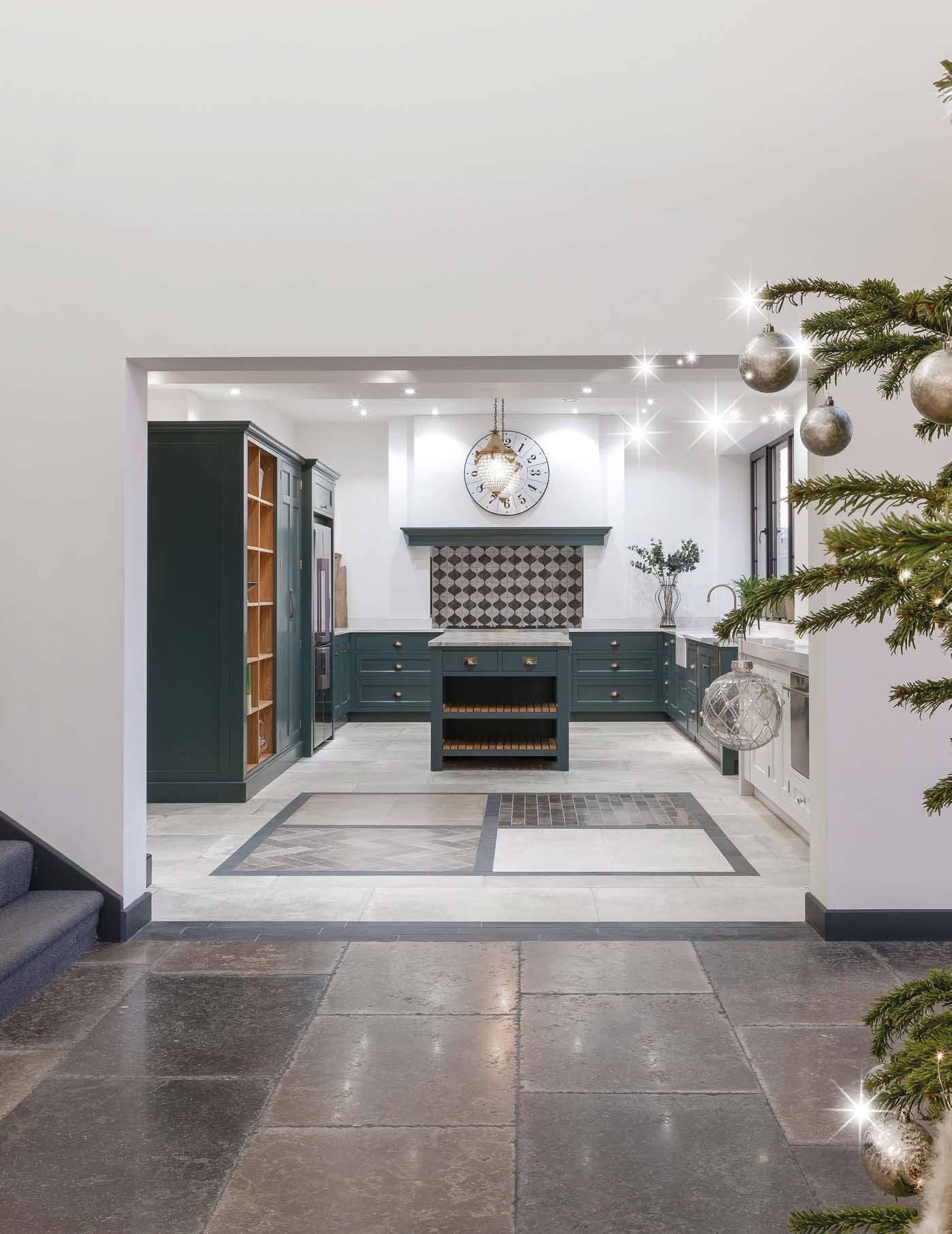
Editor Samantha Scott-Jeffries
Supplement Editor Katy Mclean

Managing Editor Sarah Feeley
Art Editors Claire Hicks, Rebecca Stead
Sub Editor Lea Tacey
Supplement Sub Editor Laura Sutherland
Features Editor Suzanna Le Grove
Homes & Lifestyle Editor Clair Wayman

Editor-at-Large Kate Freud
Follow us on Twitter @englishhometeam Pinterest at pinterest.com/theenglishhome Facebook at facebook.com@theenglishhome Instagram at instagram.com@englishhomemag
hristmas is a time we revert to traditions and rituals –cherished things that ‘must be done’ for it to really feel like Christmas. These might be something enjoyed as a child that is repeated now with younger generations, a particular tipple or delicacy to indulge in at a specific time, or songs that are sung, stories that are read and decorations that are hung each and every year. Some of these rituals we uphold as a nation, each family with its own take on how to do them.
CCelebrate a classic English Christmas with rich colour and traditional decorations.
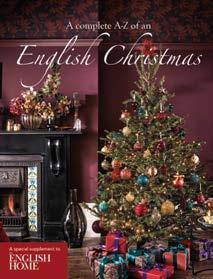
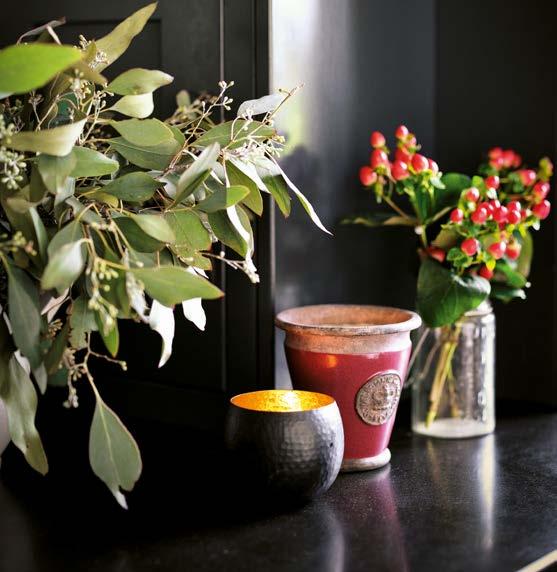
Christmas is steeped in ritual and tradition, and although we may be tempted by new trends, it is those classic schemes of red, gold and green; silvers and whites; or abundant natural greenery that most often appeal. Of course, the beauty of keeping things classic is that they can easily be added to year after year, and shopping for special new additions to hang with ceremony is a joy to cherish in the excitement of December.
Here we have created a compendium of such traditions, from A to Z, that we believe make up a quintessentially English Christmas. Of course, there are many more, some that will be personal to your family, that if not enjoyed, simply would not be Christmas. For my family, such things include us cuddling up in bed on Christmas Eve to read The Night Before Christmas, just as my mother did with me, before hanging our stockings on the fireplace and taking one last look to the skies to spy a reindeer-led sleigh. I hope you find some of your favourite festive customs here and enjoy those special moments that make Christmas so magical.
These ever-popular ideas suit many of our English homes perfectly, gently complementing exisiting decor as it is enriched for the festivitites. Here we explore four classic ways to deck the halls for Christmas – whether for a charming cottage, a grand country estate or a smart period townhouse. Wishing you all a very merry Christmas.

Merry Christmas
Katy Mclean, Supplement Editor
Follow
Instagram at instagram.com@englishhomemag

Founded by husband-and-wife team Christopher and Rima Proudfoot, The White Kitchen Company combines the pair’s extensive expertise. Rima spent over 20 years in the flooring and wall tiles industry, while Christopher has over 30 years’ experience as a skilled cabinet and furniture designer and maker. They founded the business in a converted barn in their back garden in 2015 and relocated in 2021 to a picturesque showroom overlooking Pitsford Reservoir in Northamptonshire.
The vast showroom is an inspiring showcase of the different styles of kitchen (as well as other rooms such as the library and dressing room) the company can offer. Appointment only, the experience is a personal one that offers a one-to-one with a designer and a close look at the products available. The White Kitchen Company applies exemplary craftsmanship and design to its four core ranges to suit classic and contemporary tastes.
Bringing together timeless design and the finest craftsmanship, the Period English collection is defined by a classic thumb mould around the panelled doors and drawer fronts and a bead running the length of the top and bottom edges of the top drawers.
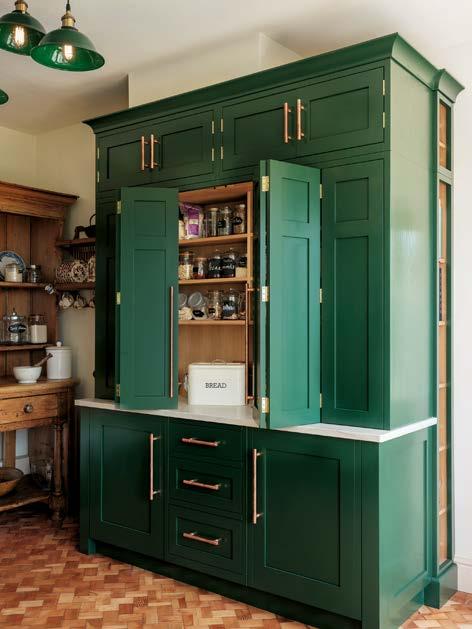
The Shaker design is a five-piece door with a recessed panel that is very versatile. Shaker design dates back to the mid-18th century and is characterised by simplicity, functionality and quality craftsmanship.
A pared-back take on Shaker style, the Fusion range has flat-fronted doors and drawers. It is in-frame, modern, and almost industrial in feel. The Fusion showroom display kitchen also features oak-fronted drawers, ribbed glass and opaque glass, emphasising the industrial feel.
The Modern kitchen offers simple, slab-fronted doors finished with The White Kitchen Company’s signature oak detailing. These units are handleless with clean lines and provide a sleek finish.
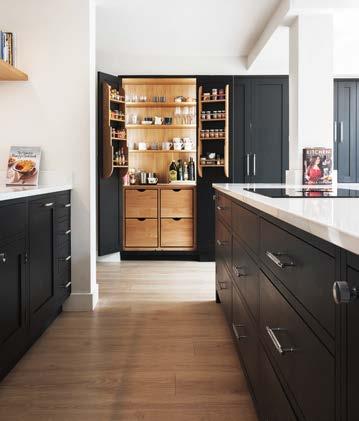
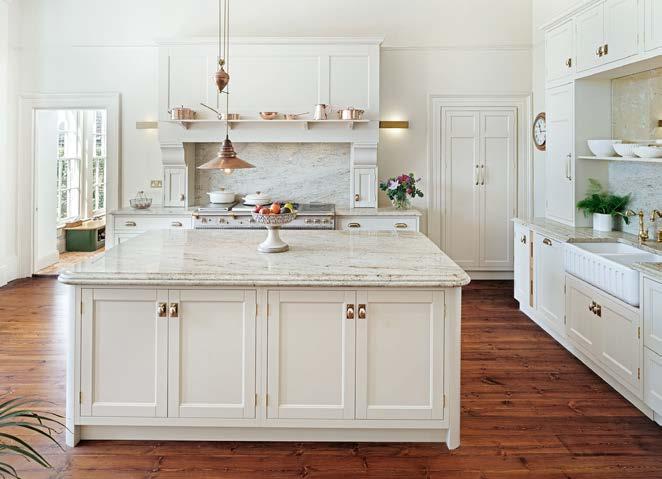
To complement the kitchens, the company works with a variety of high-end brands for top-of-the-range appliances, such as Quooker, Fisher & Paykel, and Liebherr.
When it comes to flooring and tiles, Rima knows how fundamental these choices are to the success of the kitchen. “When it comes to designing, you should never overlook the floor,” she explains. “We have been supplying stone, porcelain, and ceramic tiles for projects large or small to homes and builders for the last 20 years. Working with high-quality brands like Ca’ Pietra to provide competitive prices and
great customer care, it makes sense to buy in one place, ensuring a seamless operation for your kitchen renovation project.”
From start to finish, the team will effortlessly guide clients through from initial quotes and designs to the final fitting. With a lifetime guarantee on cabinetry, any choice of beautiful bespoke kitchen from the collection is sure to bring pleasure for many years to come.
The team would be delighted to offer a warm festive welcome in the showroom, along with a mince pie or two! thewhitekitchencompany.com ■
With a lifetime guarantee, the timeless styles offered by The White Kitchen Company will bring joy for years to comeThe back wall incorporates a fitted larder cupboard, a built-in bar, and a secret pantry. This impressive scullery is in the Shaker-style cabinets, hand-painted in Little Greene’s Dark Brunswick Green. The classic Period English cabinets sit perfectly within this Regency limestone villa in Bath.
Editor Samantha Scott-Jeffries
Supplement Editor Katy Mclean

Managing Editor Sarah Feeley
Art Editors Claire Hicks, Rebecca Stead
Sub Editor Lea Tacey
Supplement Sub Editor Laura Sutherland
Features Editor Suzanna Le Grove
Homes & Lifestyle Editor Clair Wayman

Editor-at-Large Kate Freud
Follow us on Twitter @englishhometeam Pinterest at pinterest.com/theenglishhome Facebook at facebook.com@theenglishhome Instagram at instagram.com@englishhomemag
hristmas is a time we revert to traditions and rituals –cherished things that ‘must be done’ for it to really feel like Christmas. These might be something enjoyed as a child that is repeated now with younger generations, a particular tipple or delicacy to indulge in at a specific time, or songs that are sung, stories that are read and decorations that are hung each and every year. Some of these rituals we uphold as a nation, each family with its own take on how to do them.
CCelebrate a classic English Christmas with rich colour and traditional decorations.


Christmas is steeped in ritual and tradition, and although we may be tempted by new trends, it is those classic schemes of red, gold and green; silvers and whites; or abundant natural greenery that most often appeal. Of course, the beauty of keeping things classic is that they can easily be added to year after year, and shopping for special new additions to hang with ceremony is a joy to cherish in the excitement of December.
Here we have created a compendium of such traditions, from A to Z, that we believe make up a quintessentially English Christmas. Of course, there are many more, some that will be personal to your family, that if not enjoyed, simply would not be Christmas. For my family, such things include us cuddling up in bed on Christmas Eve to read The Night Before Christmas, just as my mother did with me, before hanging our stockings on the fireplace and taking one last look to the skies to spy a reindeer-led sleigh. I hope you find some of your favourite festive customs here and enjoy those special moments that make Christmas so magical.
These ever-popular ideas suit many of our English homes perfectly, gently complementing exisiting decor as it is enriched for the festivitites. Here we explore four classic ways to deck the halls for Christmas – whether for a charming cottage, a grand country estate or a smart period townhouse. Wishing you all a very merry Christmas.

Merry Christmas
Katy Mclean, Supplement Editor
Follow
Instagram at instagram.com@englishhomemag

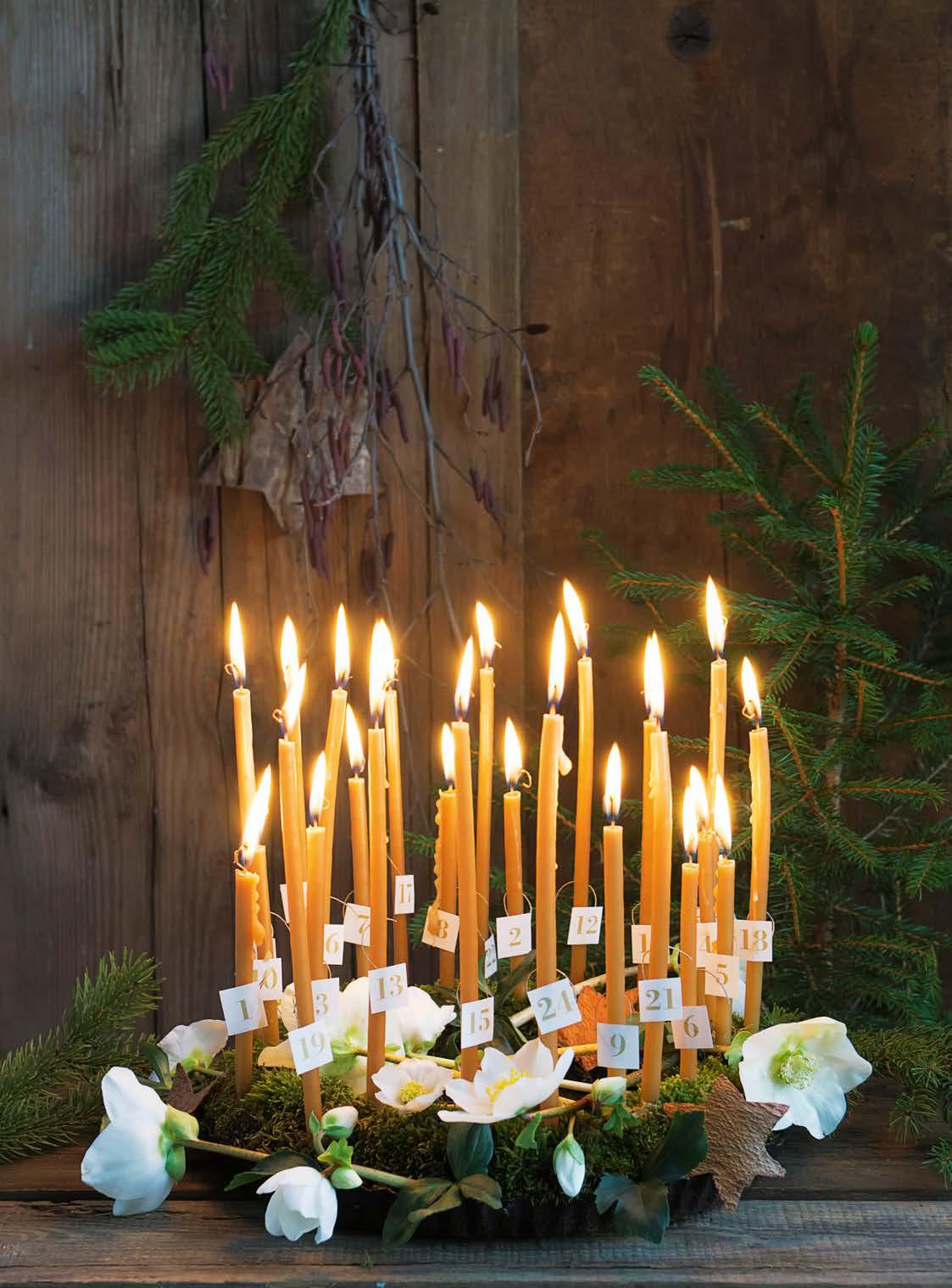
Christmas anticipation and preparations truly begin with the commencement of advent. In churches, this may fall on the Sunday nearest the 30 November, but for secular celebrations, 1 December is the usual starting point, with many using an advent calendar to count down the days leading up to Christmas Day. This may take the form of a traditional pictorial card calendar with windows to open each morning, usually with a small missive or festive icon behind. Children (and adults) may also delight in versions with a chocolate behind each window. Homemade options can be a lovely family tradition to bring out annually and can be personalised day by day with a thoughtful trinket or favourite item of confectionery.
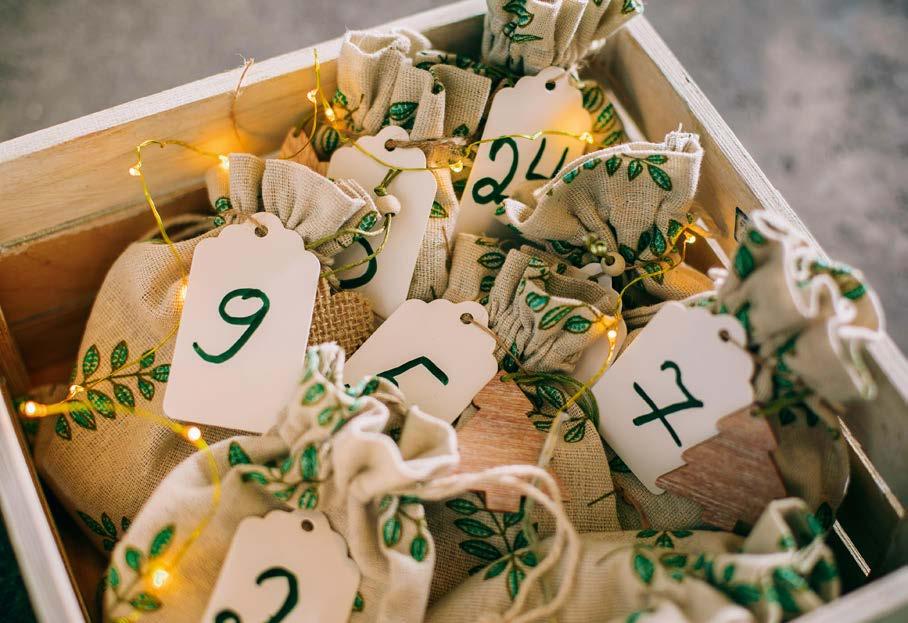
• Using an old picture or window frame, fix lengths of string or ribbon across. Decorate small envelopes, paper or hessian bags or mini boxes with a festive motif and numbers 1 to 24, and fill each with a sweet treat or small gift. Use small pegs to attach them to the string or ribbon. Adorn the frame with some twinkling lights and other festive decorations.
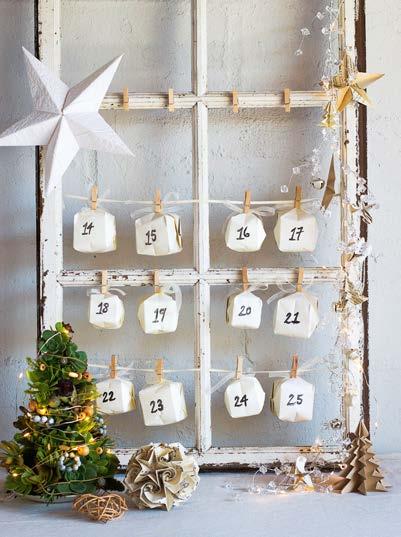
• Create an advent tree with sprayed silver, gold or white branches in a sturdy vase. Hang numbered parcels or little sacks filled with treats.
• A string of small felt stockings or hessian sacks can be hung across a fireplace (though chocolate treats are not advised if the fire is in use).
• Advent candles are a classic choice – some options are a single candle that is burned each day to a numbered point; other candle-calendar options are displays where a new lit candle is added each day to a wreath or centrepiece. By Christmas Eve, it will be beautifully aglow with 24 flickering flames.
The baubles hanging on the tree can often tell the stories of Christmases past. Boxes are carefully brought down from the attic and lovingly wrapped treasures are freed from tissue paper and old biscuit tins. Each bauble is given its special place, from vintage finds to those made by a child, to an old favourite passed down through generations and a new one or two to mark the current year. Though trends may come and go, and new colour schemes become desirable, often the tradition and ritual of bringing these old friends out just once a year mean many of us stick to a style and palette that can be built upon year on year, to create a truly personal expression of Christmas that evokes memories to cherish.
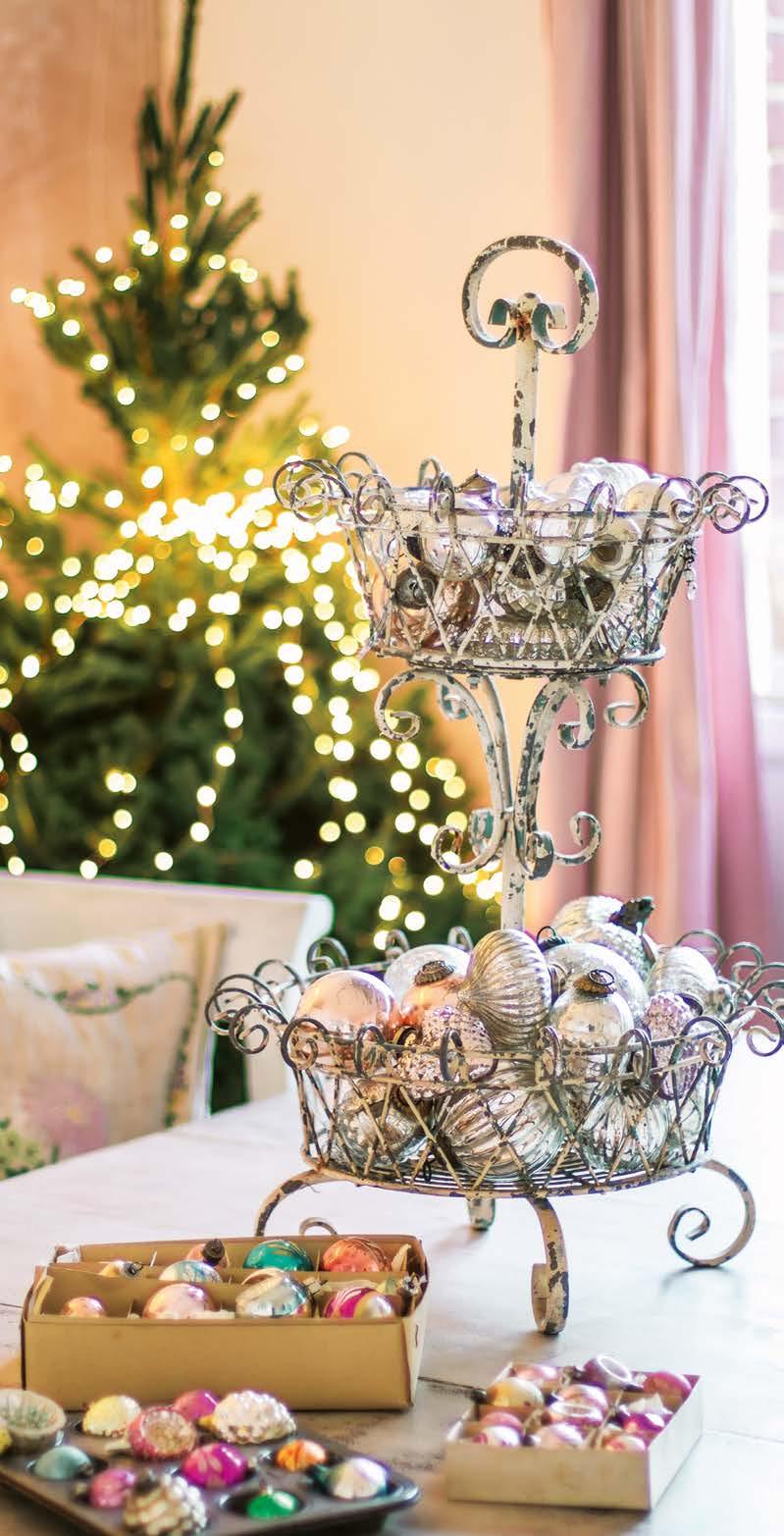
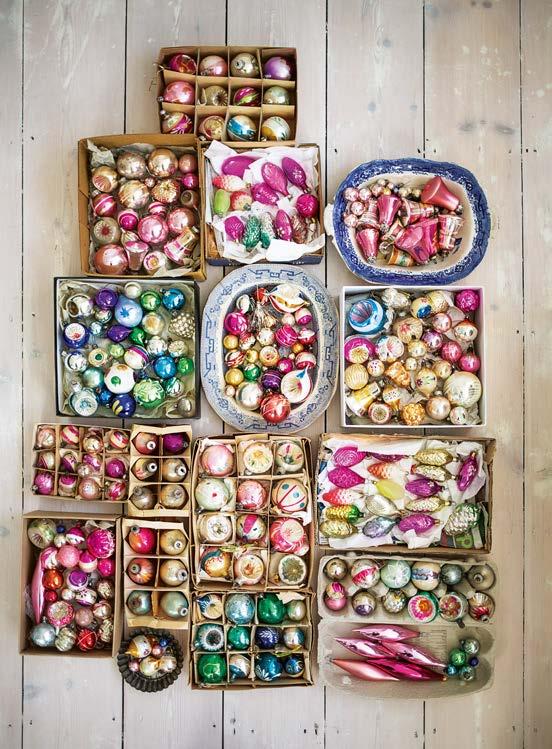
In this modern age, sitting down to handwrite a letter to friends and family rarely happens. The yuletide season evokes a touch of nostalgia, though, and an opportunity to send glad tidings to those we care about. Take the time to spend an evening writing a thoughtful message and make sending the card worthwhile, perhaps adding a letter reflecting on the past year to those acquaintances not seen for a while. Displaying a large number of cards received can often be tricky – a string around a room or up a staircase can be helpful for pegging cards onto. After Christmas, look for local charities that collect cards for recycling. Selection of Christmas cards, John Lewis & Partners.
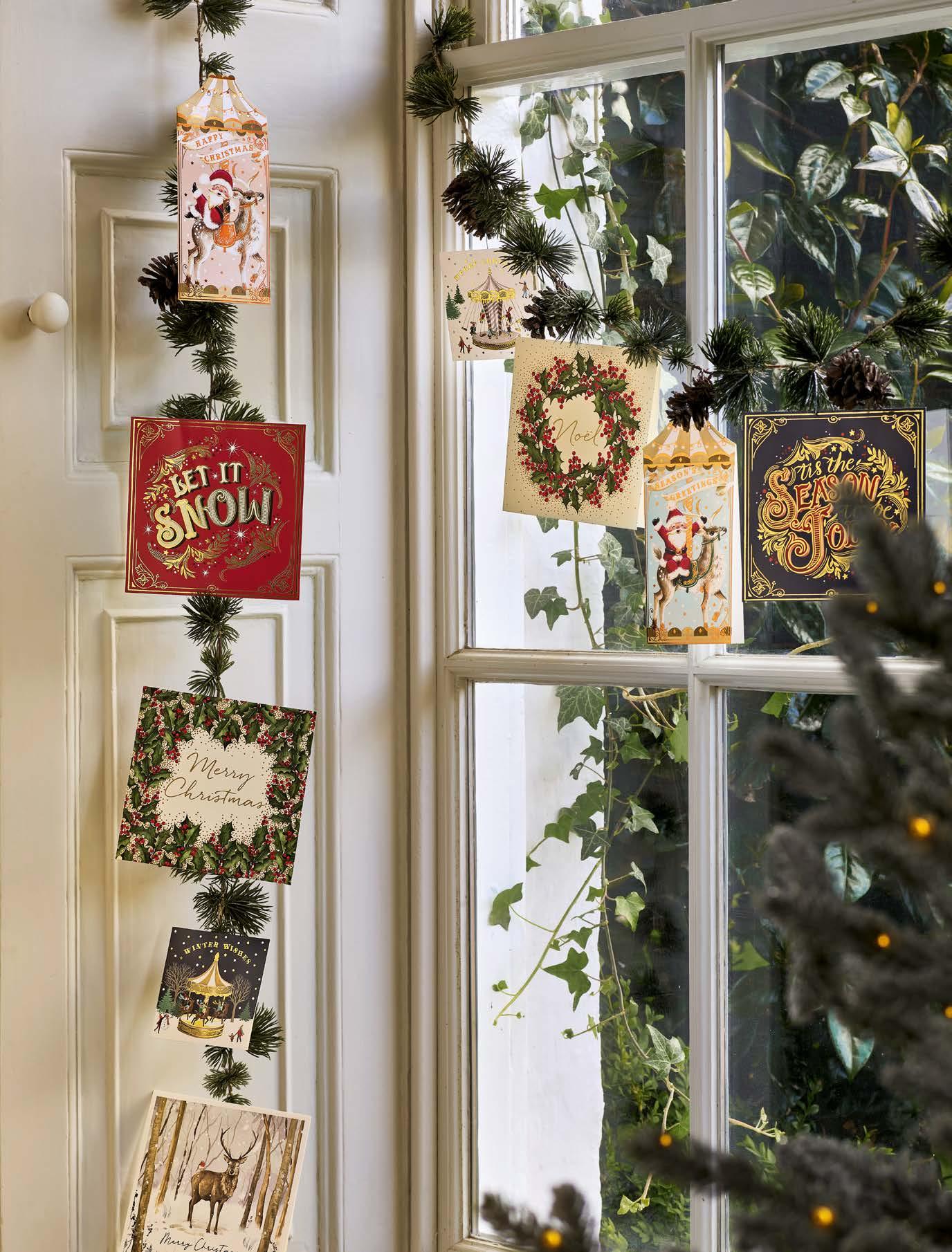
Much of the build-up on Christmas Day is for the dinner – a roast with all the trimmings. For many, a turkey is the centrepiece, although a traditional goose is becoming popular again, or an alternative choice is a large joint of beef. Timing to ensure everything is served at the same time, often for a large number of people as extended families gather together, can be
stressful. Here, we have gathered some top tips from Lisa Bennison, product and innovation manager at Bettys, to ensure that whatever is served will be delicious for this most important of family meals. Visit theenglishhome.co.uk for beef recipes. The Enchanted Woodland tablecloth (right), MindThe Gap

•For a standard turkey that weighs around 6kg, the cooking time will be about 4 hours. It is best to calculate your cooking time at 40 minutes per kg to get the most accurate time.
•Place a trivet of vegetables (celery, onion and carrot) under the bird and add 2 litres of chicken stock with a glass of wine. This will create steam to keep the bird moist and provide delicious juices for your gravy.
•It is important that poultry is cooked through. If using a digital thermometer, check that it is cooked by sticking the probe in the thickest parts, such as the breast and thighs. The temperature should hold at 75°C for 30 seconds; if not, return to the oven for 10 minutes and check again.
•The classic way to test is to push a spoon under the leg of the bird so that it pierces the skin (or use a skewer) and inspect the juices that collect in the spoon. The juices should be clear.
•Cut off excess fat from the neck and inside the cavities. Render down this fat, add herbs and orange zest and use these to cook your roast potatoes.
•Prick the skin of the bird a few times all over to allow the fat to escape. There will be a lot of fat, so drain this off at least every 30 minutes and use this fat to re-baste the goose as it cooks. If the goose is ready-trussed, then loosen the string and pull out the legs and wings a little – this helps the bird cook better.
•If the breast is done first, it can dry out while the legs are finishing cooking. Should this happen, remove the legs and place them back in the oven to continue cooking while keeping the cooked breast warm in a tent of foil. Continue to baste the legs often to keep them moist.
•The goose is cooked when the meat thermometer reads 75°C; it needs to cook for 10 mins at 240°C/fan 220°C/gas 9, before being reduced to 190°C/fan 170°C/gas 5 and cooked for 20 mins per kg for medium rare, 32 mins per kg for more well done, and allow 30 minutes for resting.
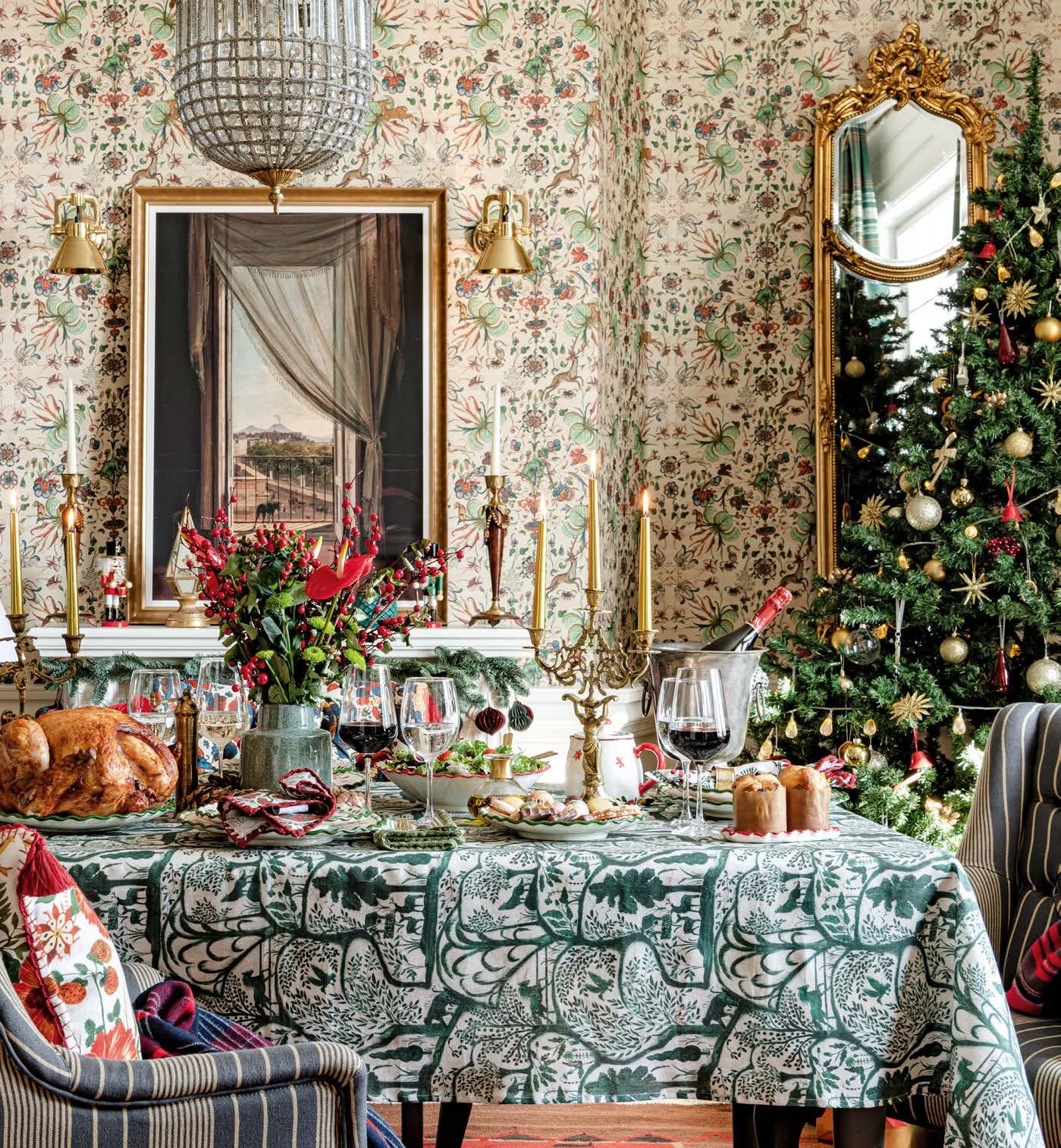
A creamy concoction of eggs, milk, cream, spices and a splash of rum has become a popular American indulgence over the festive period. It began life though in medieval England as a ‘posset’ – a similar drink of warm milk enriched with wine or ale. There is much debate about how the name evolved – some point to ‘nog’ as stemming from noggin, a wooden cup used to serve alcohol; others that ‘grog’ was a term for rum, and thus egg and grog became egg nog. It is often served chilled, but it can also be enjoyed as a warming drink on chilly nights, as suggested in this deliciously Christmassy recipe.
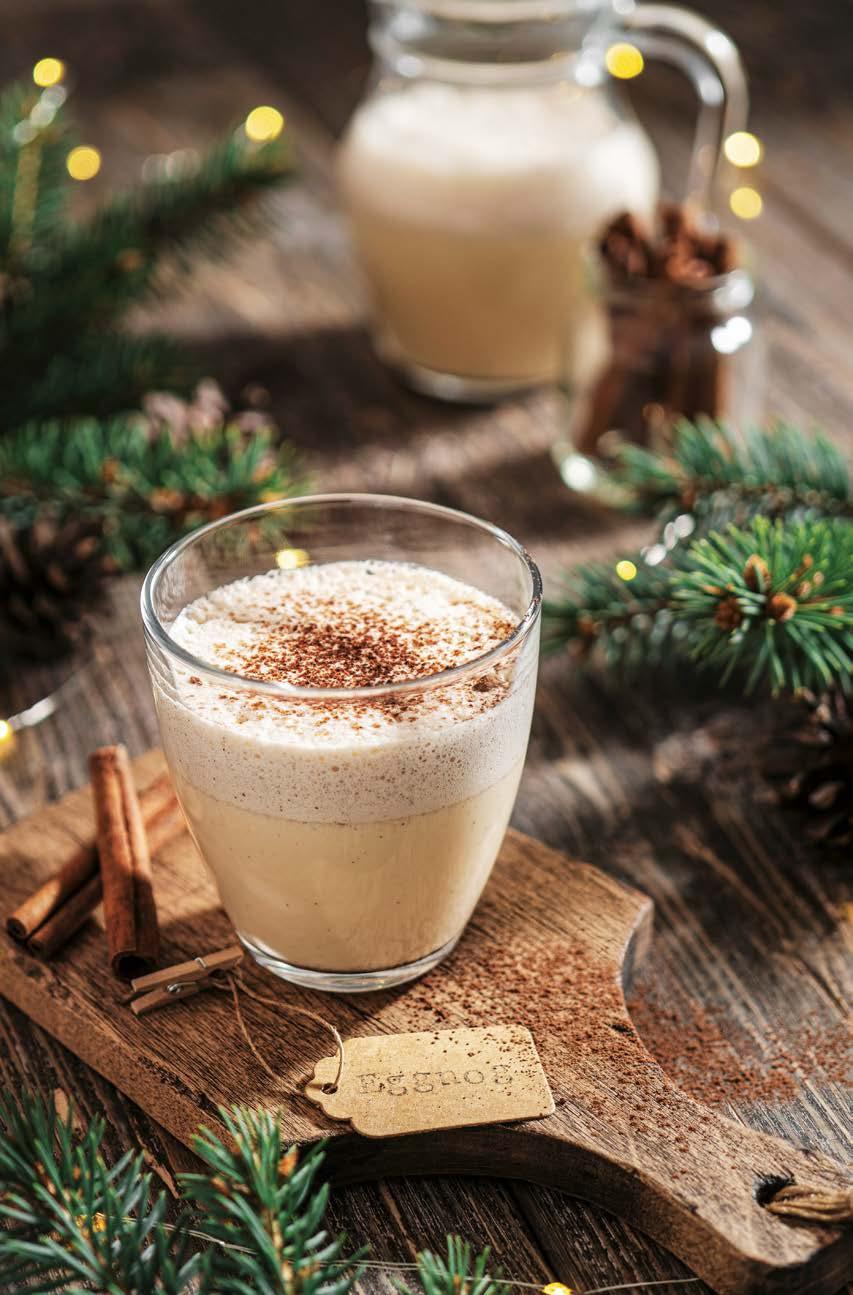
Serves 4
Preparation time: 15 min
Resting time: 10 min
Total time: 25 min
Difficulty: easy
6 egg yolks
60g icing sugar
125ml whisky
400ml milk
200ml double cream
1 vanilla pod
¼tsp ground cinnamon
½tsp ground ginger
• Beat the egg yolks and icing sugar in a metal bowl set over a pan of simmering water, until foamy.
• Add the whisky measure and continue beating until the mixture thickens to a creamy consistency. Do not let it get too hot.
• Meanwhile, bring the milk,
cream, vanilla pod and cinnamon just to the boil. Set aside to infuse for about 10 minutes.
• Remove the vanilla pod and slowly pour the cream mixture onto the egg mixture, stirring constantly. Pour the mixture into tea glasses, dust with ground ginger and serve.
Santa Claus, Kris Kringle, St Nicholas… he goes by many names, but in the United Kingdom, we anticipate the arrival of Father Christmas, delivering gifts on Christmas Eve and filling the stockings of those on the ‘nice’ list. The legend of the figure has many different origins, some of which have been fused to create the character beloved by children at Christmastime. Saint Nicholas, a bishop known for his kindness and generosity, is the start of the legends, and devotion to him encouraged the giving of gifts to
others. The Dutch named this figure Sinterklaas, which in turn became Santa Claus in English, and the popular name used in The United States. The English Father Christmas has become wholly synonymous with the American interpretation of Santa, but it also has roots that go back to an unknown pagan figure who lifted people’s spirits during the bleak winter months. This man wore robes of green and a holly crown – much like the depiction of the ghost of Christmas Present in Charles Dicken’s A Christmas Carol.
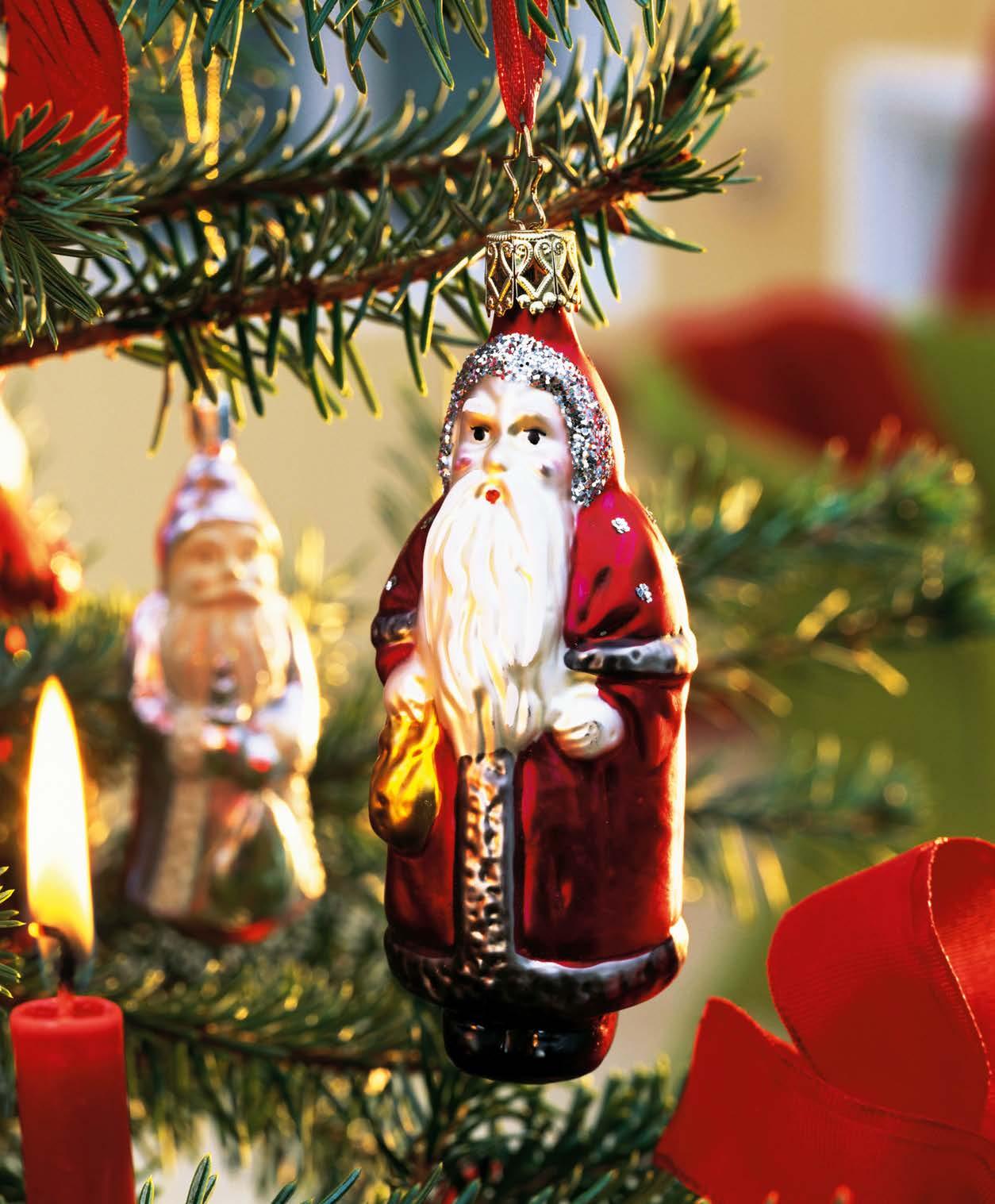
Decking the halls means adorning much of the house with impressive decorations – a garland, down the stair banister, or on a mantelpiece can be a striking focal point, that complements the tree. Garlands combine pagan and Christian traditions and rituals of bringing in evergreens to brighten and scent the home, while also being symbolic of eternal life and the promise of new hope in the spring. Holly, ivy and fir can be used – perhaps with eucalyptus for a lovely fresh scent. Weave in other natural decorations, such as berries, dried seedheads, dried orange slices or even fresh flowers. A string of lights could be interspersed for some twinkle, and even some baubles to chime with the tree can look lovely. Take care if also positioning candles amongst a mantelpiece garland. Finish a stairs garland with a large red bow for a classic look.
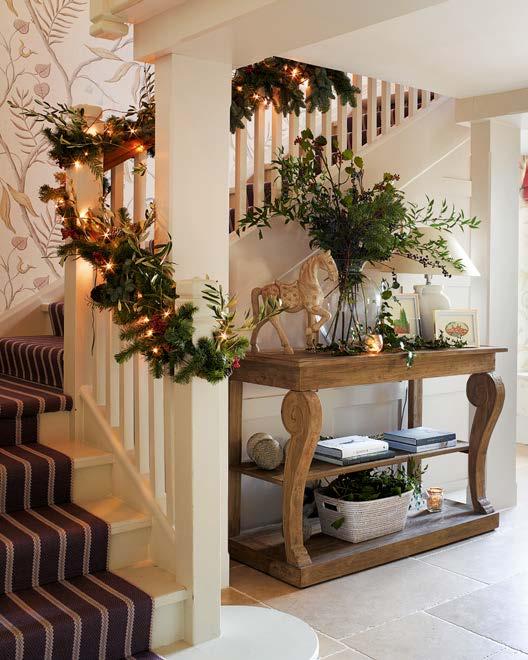

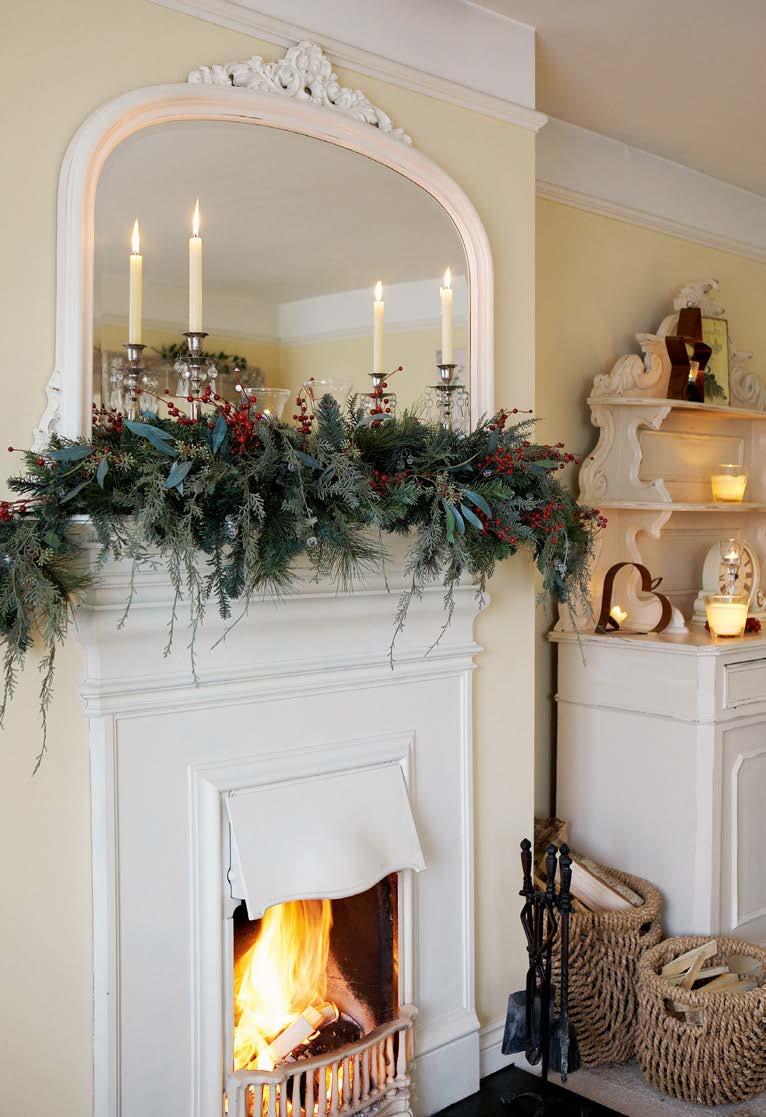
A stalwart of natural decoration, holly can not only be used in garlands and wreaths, but it is also a simple but effective way to add a Christmassy touch all around the house. A sprig of glossy evergreen leaves with ruby-red, jewel-like berries on the corner of a picture frame or mirror instantly adds a festive touch. Add it to a place setting, tuck it into a napkin ring, or use it to embellish a gift wrapped simply in brown paper and tied with a pretty ribbon. And, of course, a fine sprig of holly is essential for adding a flourish to the resplendent figgy pudding brought out at the end of Christmas dinner. For a more abundant display, fill vases with long stems of holly, fir and ivy.
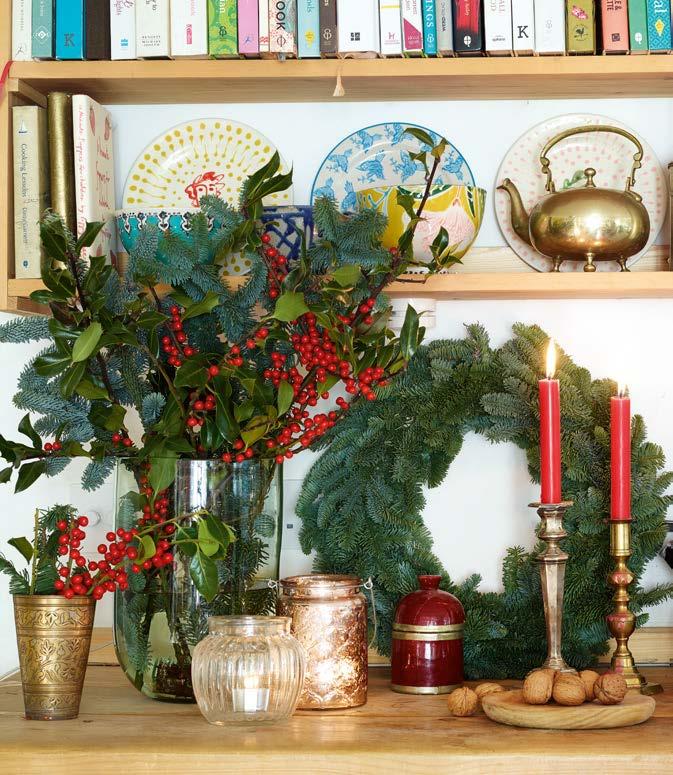
The romantic notion of ice skating at Christmas often evokes images of Victorians in their finery, gliding across a frozen lake or river. Though indoor rinks allow one to skate year-round, there is something special about partaking in it at Christmas, and many towns now have temporary rinks to enjoy over the festive period. Some of the most popular in London feature a backdrop of landmark buildings, such as Somerset House and the Natural History Museum. It is considered part of the yuletide calendar to go for a swirl around the rink, followed by warming mulled wine or hot chocolate. Going in the evening, with the glow of twinkling Christmas lights, makes the experience all the more magical.

Christmas dinner would not be complete without the chorus of groans that follow a joke from a pulled cracker being read. This curious tradition dates back more than 150 years to a London confectioner, Tom Smith, who was inspired by French bon-bons wrapped in a twist of tissue paper. He added a small motto and, with the sound of a crackling log fire sparking another idea – he added a snap. The design took many years to perfect, and his son later added paper hats and novelty gifts. The business became so successful it employed more 2,000 people by the 1890s, and is still going strong today. There is a movement to less frivolous contents –small luxury gifts, sustainable decorations or paper games rather than plastic toys; but a ‘dad’ joke, a paper hat and a resounding bang upon being pulled are still essential parts of an English Christmas feast.
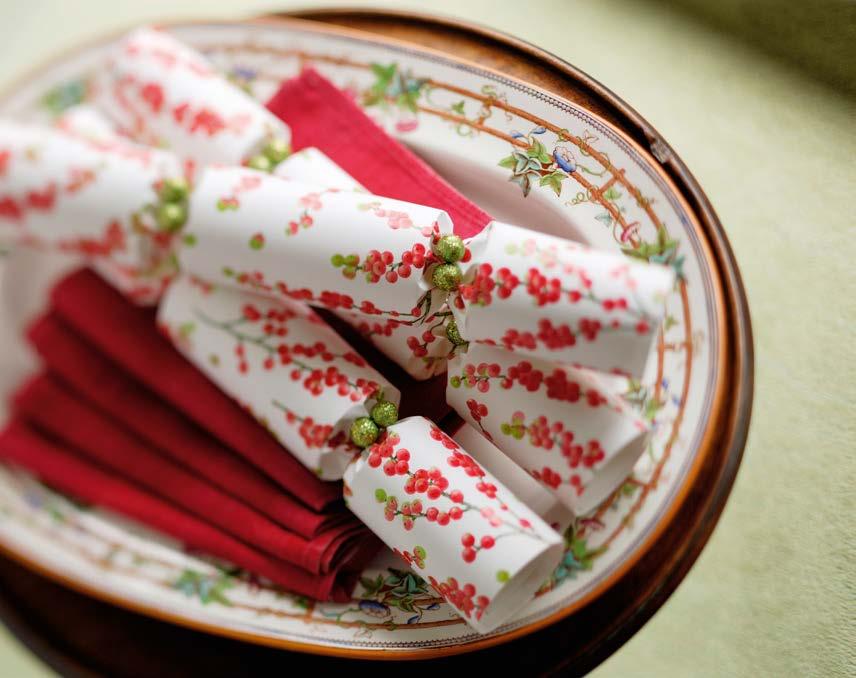
Whether simply enjoying a rousing serenade of Ding Dong Merrily on High by local carollers or attending a candlelit service, classic Christmas carols are some of the most powerful sounds of the season. The Festival of Nine Lessons and Carols at King’s College, Cambridge was a service introduced in 1918 as a more imaginative approach to worship. It was first broadcast in 1928 and continues to play on the BBC Radio 4 airwaves every Christmas Eve to millions around the world, who simultaneously tune in to listen to the classic stirring opener, Once in Royal David’s City
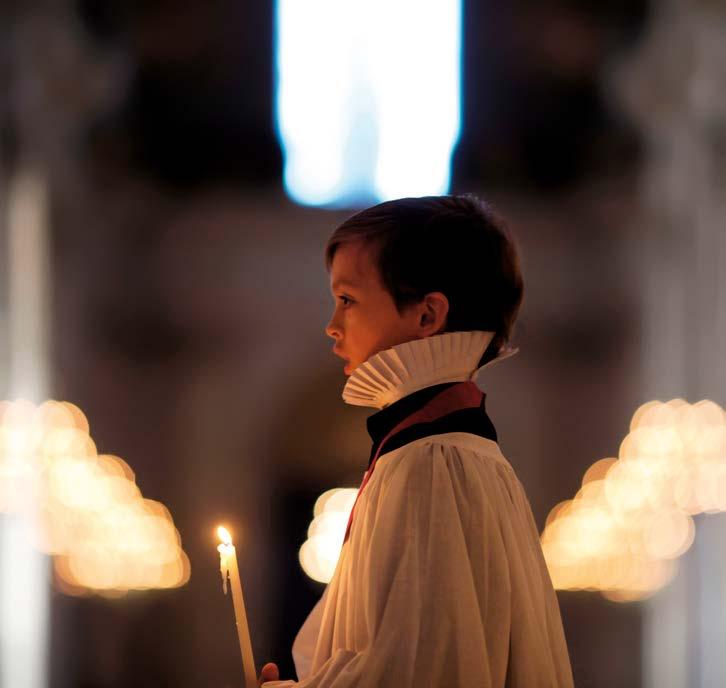
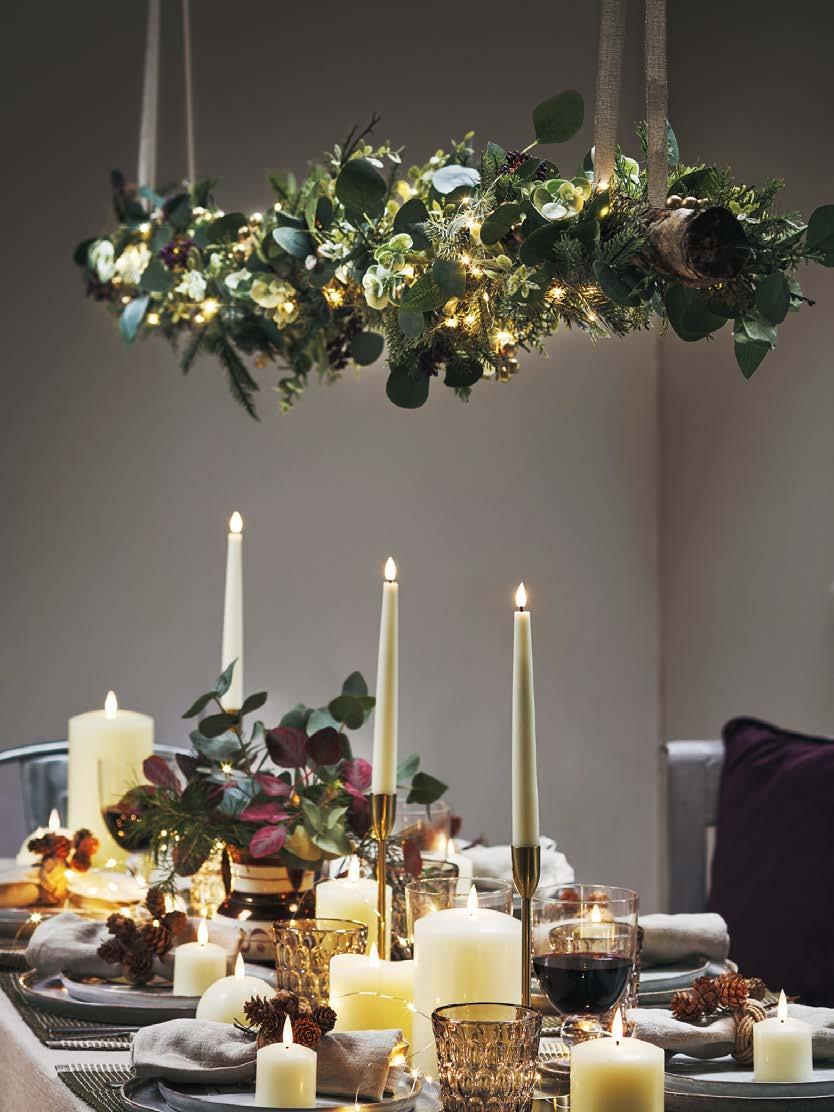
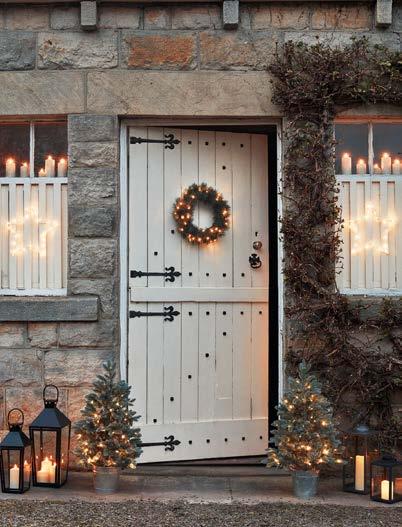
From the twinkle of bulbs on the tree and flickering candles at dinner to brilliantly illuminated displays in towns, the glow of lights at Christmas creates a magical atmosphere. Many towns and cities host grand ‘switching-on’ ceremonies with a countdown to the big moment. Lights might be strung along streets, wrapped around trees or even cast as colourful projections on iconic buildings to make late-night Christmas shopping trips a little more joyful. Residential areas also put on a show, with neighbours gently competing to put on the best display. Strings of lights across porches and bay windows; perhaps a light-up reindeer in the front garden and some glowing bulbs in outdoor trees, all in tasteful warm white, create a magical welcome to guests, delight passers-by, and bring cheer to the neighbourhood on cold, wintry nights. Meanwhile, indoors you can set the scene with fairy lights, candles and a roaring fire. Scented candles add an extra festive layer, but classic church candles are an authentic choice. Layer in different sizes and use on tables, on the mantel or hearth, or even arrange them in an empty fireplace to add a warming glow. Good-quality LED candles are a great safety-conscious choice that will also last for years.
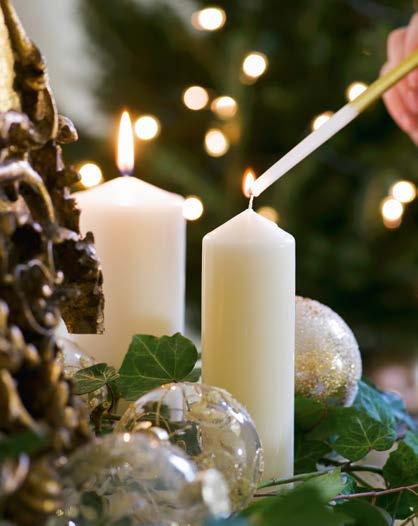

It is estimated that more than 800 million mince pies are eaten in the UK over the festive period. These delicious pastries filled with mincemeat are offered to guests, served as a pudding, enjoyed during carol concerts, and are the perfect warming treat after a wintry walk.
They are a delicacy that has been around since the Middle Ages. As with many traditions, they take on religious importance, too – with established recipes for mincemeat featuring 13 ingredients to represent Jesus and his disciples. Classically a mixture of dried fruits, spices, sugar and




suet are cooked with alcohol to create the rich mincemeat filling. Mince pies can be made in moments using store-bought or homemade mincemeat, so are perfect for unexpected visitors – simply keep pastry to hand in the fridge, too. Serve with brandy butter or a dollop of cream.
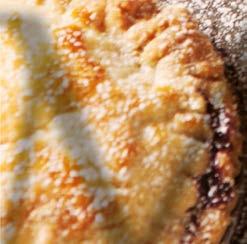
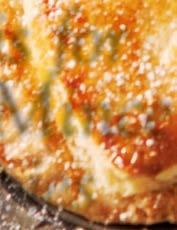
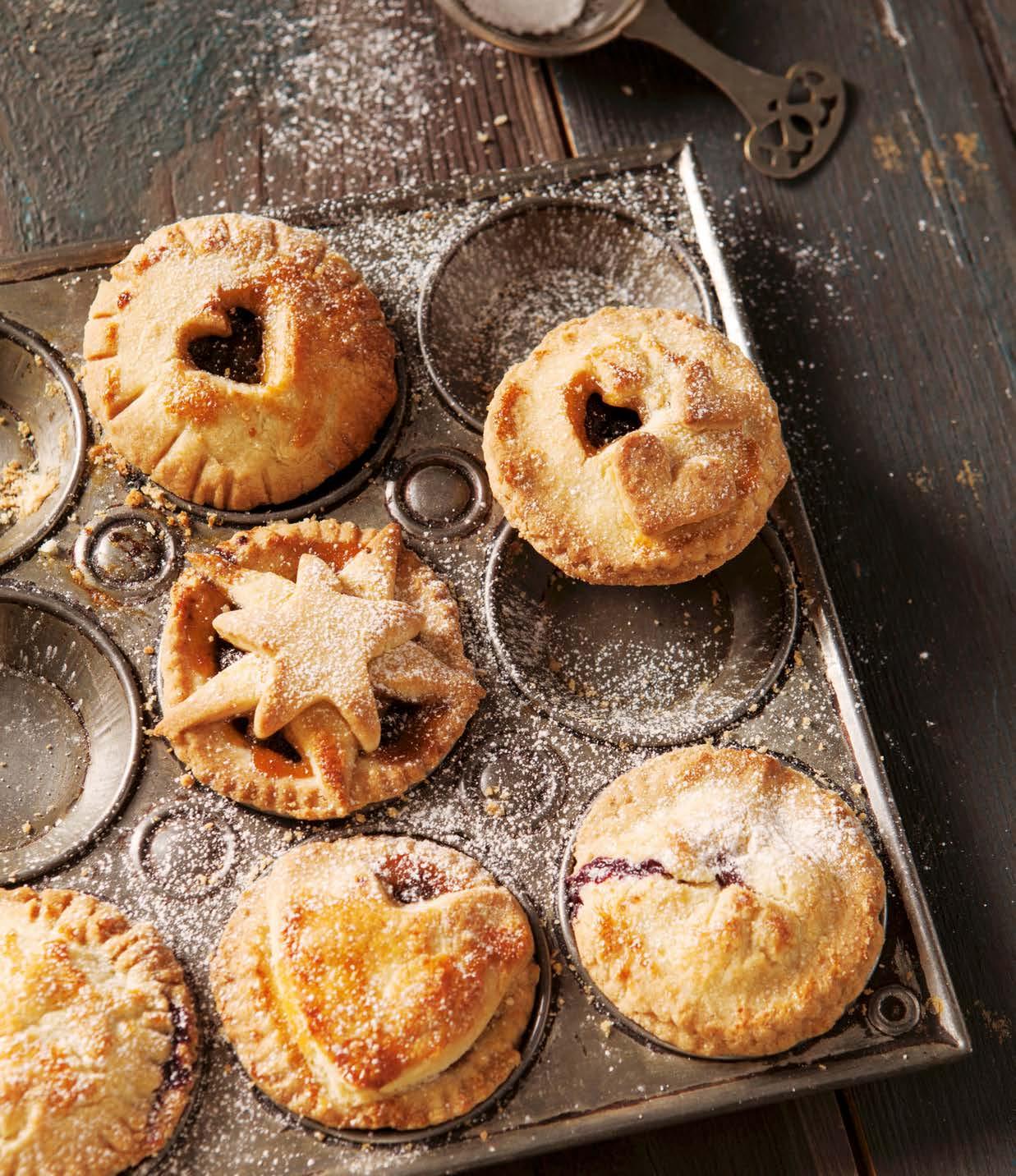
Makes 12 pies
Preparation time: 30 min
Baking time: 20 min
Total time: 50 min
Difficulty: easy
150g chilled butter; plus a little extra for greasing
65g caster sugar
1 pinch salt
230g plain flour; plus extra for dusting
400g jar mincemeat
1 egg yolk
icing sugar; for dusting
• Dice the butter and place it in a bowl with the sugar, salt and flour. Rub in with your fingertips, gradually bringing it together into a soft dough (adding a few drops of water if needed). Divide the dough in half, shape one piece into a roll and slice into 12 portions.
• Preheat the oven to 180°C/gas 4.
• Grease a 12-hole mini muffin or bun tin with butter, place a dough portion in each hole and press down to line, forming a rim around the edge. Next, spoon mincemeat into each lining and spread level.
• Roll out the remaining pastry on a lightly floured surface to 3-4mm thickness, and cut out circles with a fluted cutter the same size as the top of the pies. Cut out small hearts or circles from some of the lids as desired. Place a lid on each pie, pressing the edges with a fork to seal.
• Re-roll the remaining dough and cut out stars or hearts. Whisk the egg yolk with 1tbsp of water, brush over the pastry lids and attach the hearts and stars. Brush attachments with egg yolk. Bake for about 20 minutes, or until golden. Allow to cool, then remove from the tin and serve warm or cold, dusted with icing sugar.
A trip to the theatre, whether for a traditional pantomime or a classical ballet performance of The Nutcracker, is a treat for the whole family to enjoy. At the pantomime, cheering, booing and shouting “He’s behind you!” is a ritual young and old delight in – especially when some famous faces make appearances as the dame, fairy godmother or wicked witch
in amusing retellings of classic fairy tales. For something more enchanting, Tchaikovsky’s The Nutcracker is a magical experience. From a sugar plum fairy to a mouse king and a magical growing Christmas tree, an enthralling performance by both the National and Royal Ballets in prestigious theatres is always a captivating way to celebrate the festive season.
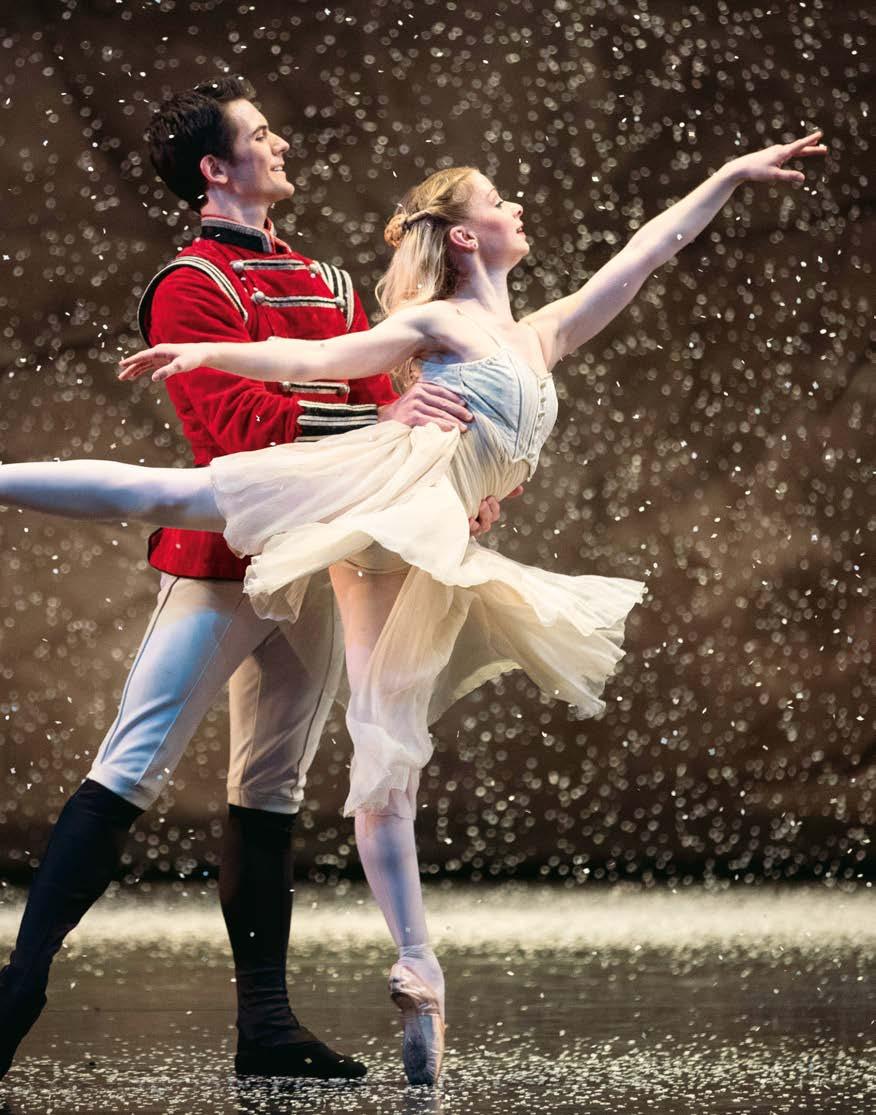
The scents of Christmas are as evocative as the sights and sounds. For many, a waft of oranges and cinnamon can transport them back to Christmases past in an instant. Oranges are not only found in the foot of a stocking, but are used as decorations, infusing a rich citrusy scent. Dried orange slices can be strung into a simple garland or used to decorate wreaths. Pomanders are oranges decoratively studded with cloves and can be displayed in a bowl or hollowed out to hold a candle, filling the house with glorious scent. Oranges often feature in Christmas recipes – from chocolate orange desserts to being an essential flavour profile in mulled wine – the sharp, sweet tang of citrus balances the sugar and spices.
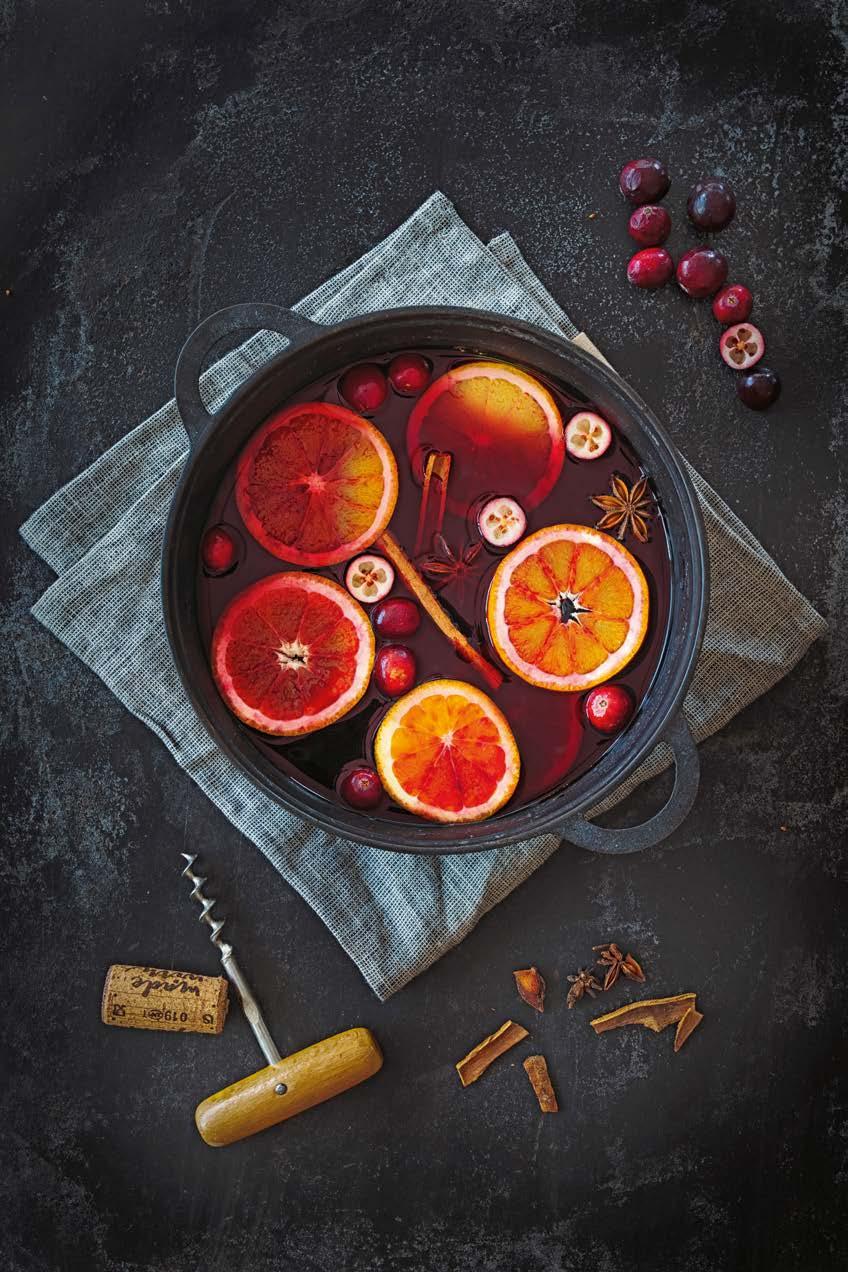
Serves 4
Preparation time: 10 min
Resting time: 10 min
Total time: 20 min
Difficulty: easy
INGREDIENTS
1 blood orange
2 cinnamon sticks
100g cranberries
2 star anise pods
3tbsp brown sugar
60ml rum
1 bottle of dry red wine
METHOD
• Slice the blood orange. Place in a saucepan with the cinnamon sticks. Halve the cranberries, if large, and add to the pan along with the star anise pods, sugar, rum and red wine. Heat through (but
do not let the mixture boil). Cover with the saucepan lid and leave the wine to infuse for about 10 minutes.
• To serve, reheat gently if necessary, and pour into glasses or festive cups (approximately 250 ml).
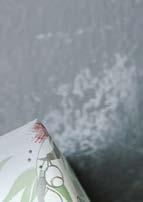












As families and friends come together at Christmas, it is customary to give, and receive, presents. For children, this is often the most anticipated element of the day, with letters written and sent to the North Pole and stockings hung with extra care. For adults, it can be one of Christmas’s more stressful parts. However, when thoughtful gifts are lovingly given and opened to be met with smiles of pure delight, all those difficulties melt away. In England, gifts are usually opened on Christmas morning, though some families open just their stockings and save the main presents under the tree until after dinner. In other European countries, it can be customary to open presents on Christmas Eve… a tradition some like to honour here by choosing one gift to open before that final sleep.
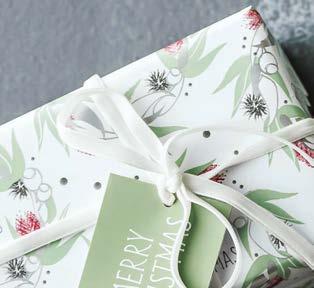
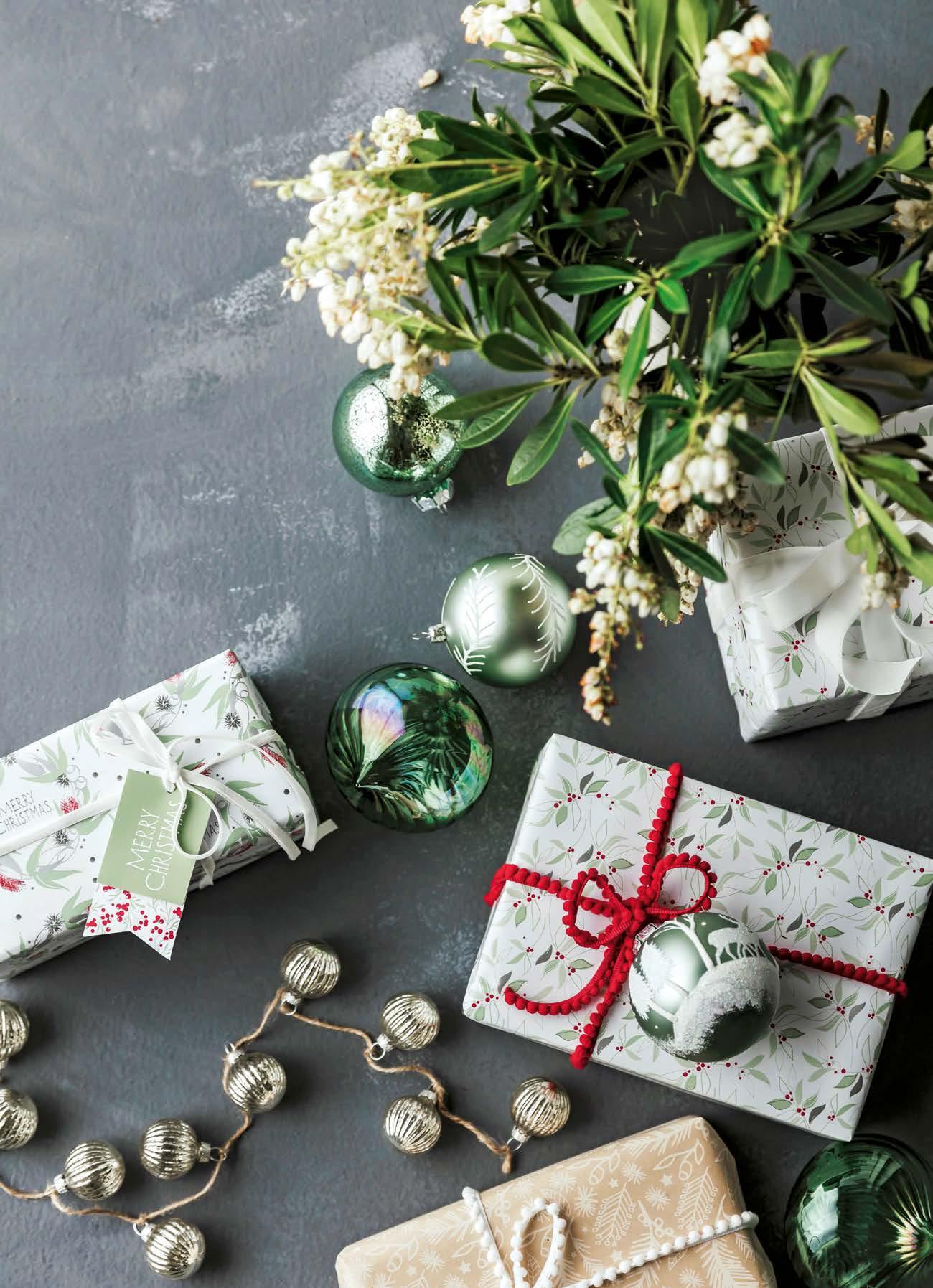
An unwavering part of some families’ Christmas Day is tuning in to watch or listen to The Queen’s Christmas Message at 3pm. It is a tradition Her Majesty’s grandfather King George V began in 1932 and started as radio broadcast to all Commonwealth nations. Her father George VI continued during his reign, and The Queen spoke of continuing the tradition in her first broadcast of Christmas 1952. In 1957. the message was televised for the first time, live from the Long Library at Sandringham, where the Royal Family spends Christmas. It is now pre-recorded at Buckingham Palace and reflects on current issues, concerns and major events and achievements of the year, as well as the monarch’s personal thoughts on what Christmas means to her family, and those listening at home.
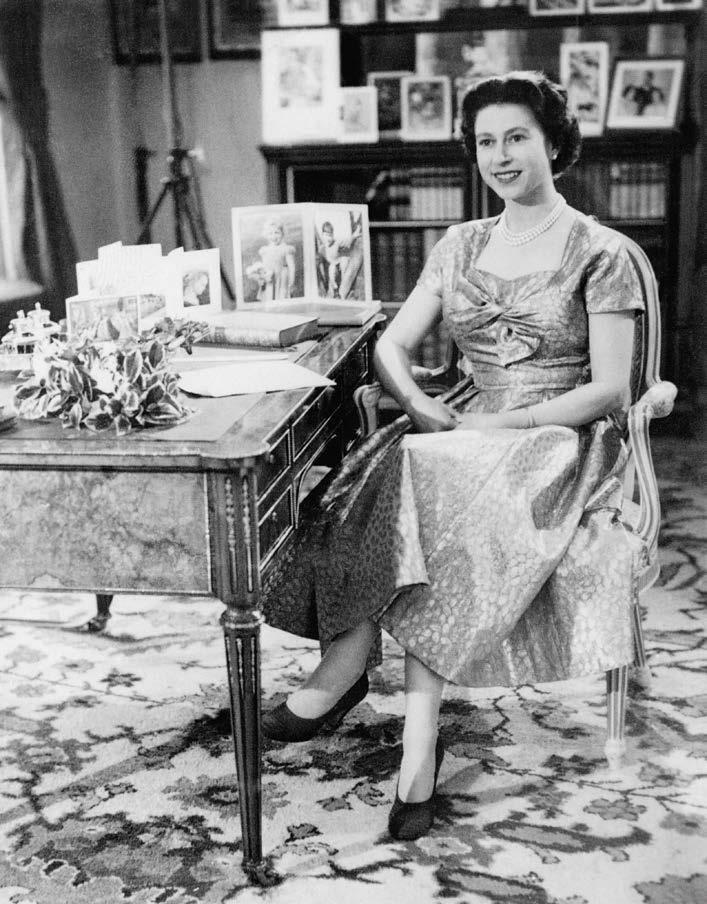
R may also be for rejoicing, as families and friends gather to celebrate together. It is a time that brings together all generations, often in one house, with children sharing rooms and any available chair brought to squeeze another person around the table. Whether expecting a houseful or just one or two guests, it is a nice gesture to make them feel at home over such a special time. Adding a few festive touches to a guest room gives them a space to enjoy away from the bustle. A scented candle, some twinkling lights, perhaps a wreath hung on the wall…even a few little gifts wrapped up by the bed – some luxurious toiletries and a pair of slippers – would all be gladly welcomed. Champagne glasses, below, The White Company
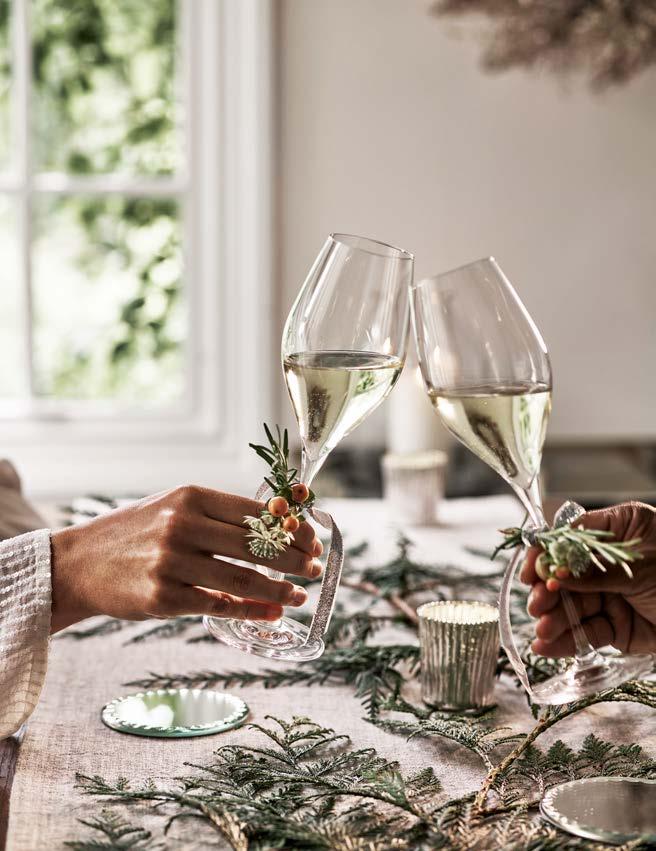
Entwined with the folklore of Saint Nicholas, the hanging of stockings on Christmas Eve is in anticipation of them being filled with small presents and sweet treats and, of course, hoping for an orange and not a lump of coal in the foot.
Cherished stockings might be homemade and brought out each year – children will
love a personalised one, embroidered with their name to make sure Father Christmas gets his deliveries right.
The traditional place for stockings to be hung is by the fireplace, for Father Christmas to fill after coming down the chimney, but some children like to place their stocking on their bedroom door or at
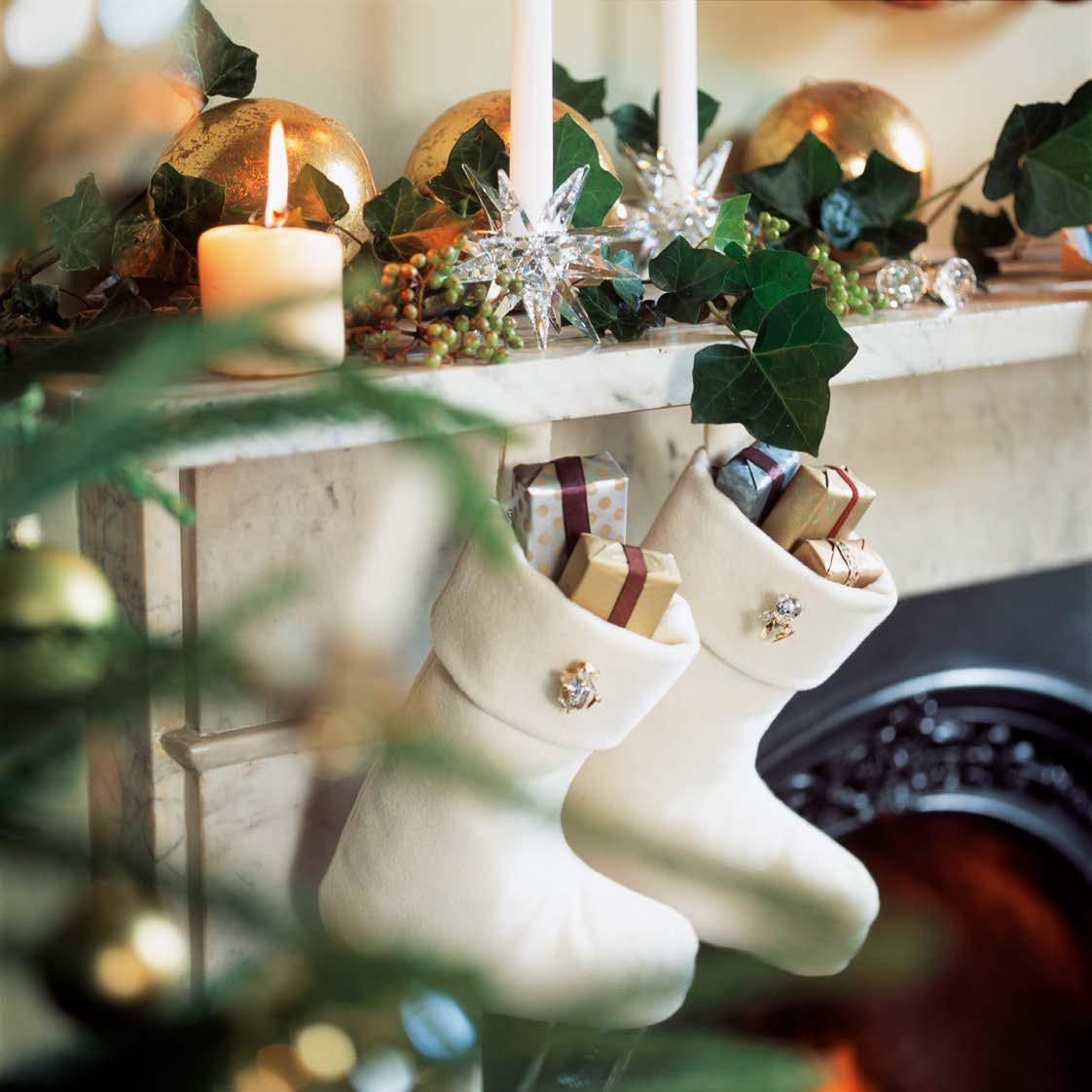
the foot of their bed – allowing them to quickly discover whether “he’s been!” in the early hours of Christmas morning.
Grown-ups, too, might like to hang a stocking in the hope they have remained on the ‘nice’ list, and might discover that it has been filled with a few little luxuries come morning…
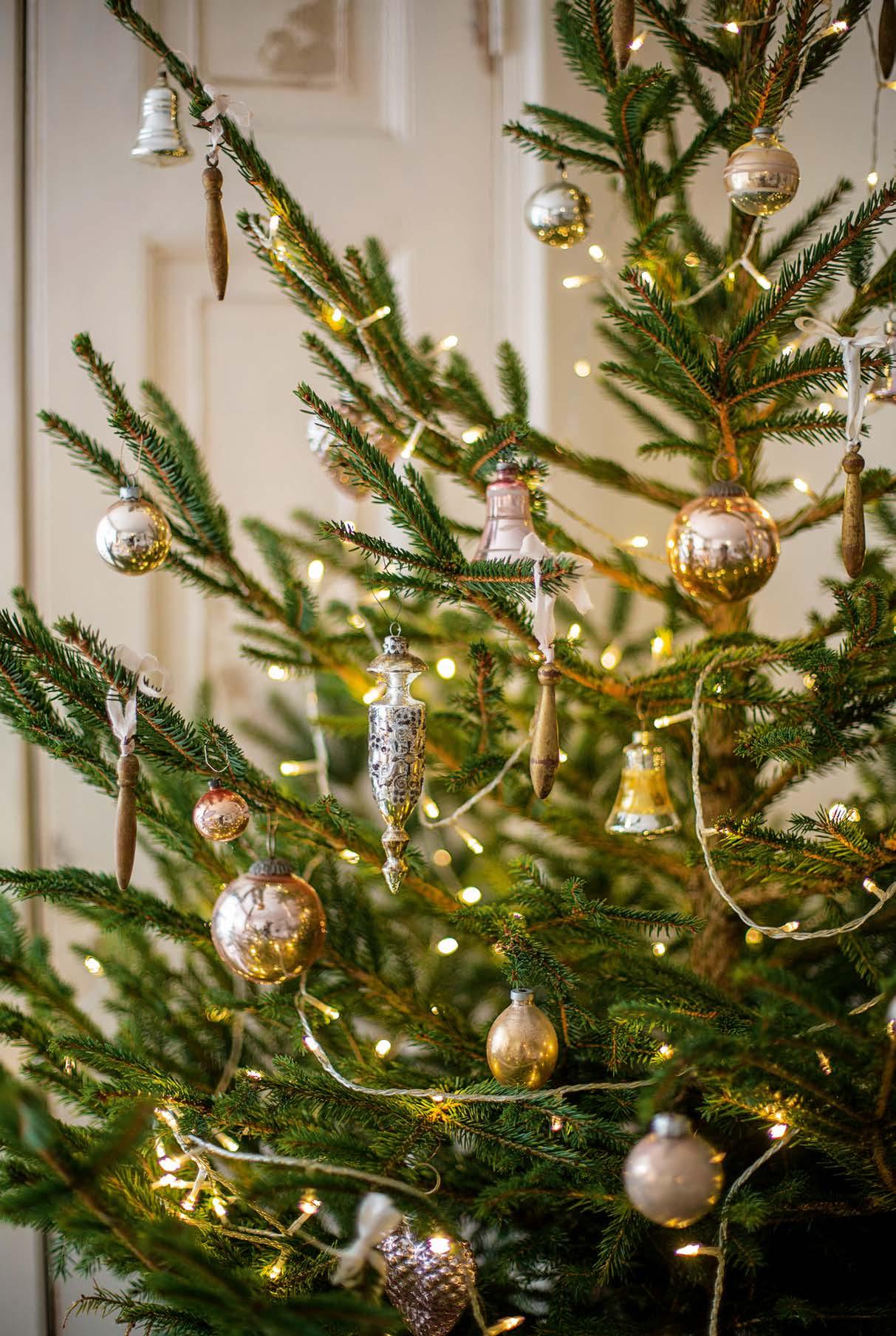
The centre point of celebrations is the Christmas tree – often given a prime location in a sitting room, it draws the gaze with twinkling lights, assorted glistening baubles and a gleaming star atop the highest bough. The Germans are often credited with beginning this somewhat strange tradition of bringing a large tree into the house, popularised in England by Prince Albert, who continued his childhood tradition once he married Queen Victoria. Many good-quality faux trees are available – which can make a great investment to last many years and are less high maintenance than a real tree. But for many, the smell and look of a real spruce, fir or pine tree is essential to conjuring up the Christmas spirit. Setting aside a day to choose the perfect tree, untangling lights and adorning it with treasured decorations, perhaps with favourite festive songs playing and mince pies warming in the oven, is a cherished ritual of the season. The first weekend in December marks a good time to dress the tree, especially a real one, which should see it still in good shape come Christmas Day. Then, tradition dictates it should be removed from the house by Twelfth Night.
Pre-lit tree and decorations, right, Cox & Cox
• Do not position it close to a radiator – it has been growing in a cold habitat, and it can be quite a shock to come indoors, so try to keep it as cool as possible.
• Keep it watered – a cut tree can still drink up to three pints of water a day, so ensure that it is topped up and well hydrated in order to increase its longevity.
Are you trying to decide between a spruce, fir or pine? Here is a guide...
NORWAY SPRUCE is a classic choice for a traditional-looking tree with a highly aromatic scent.
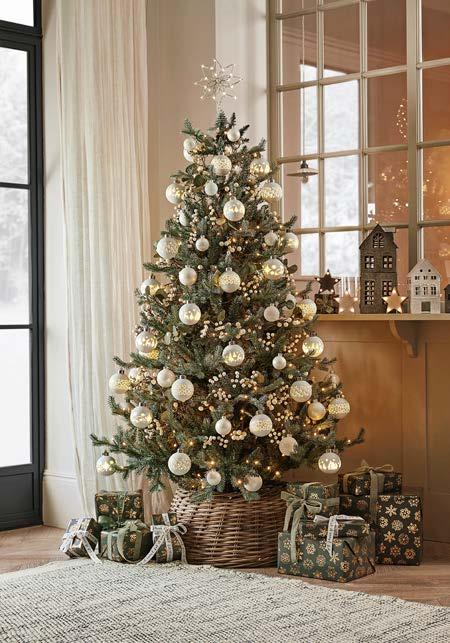
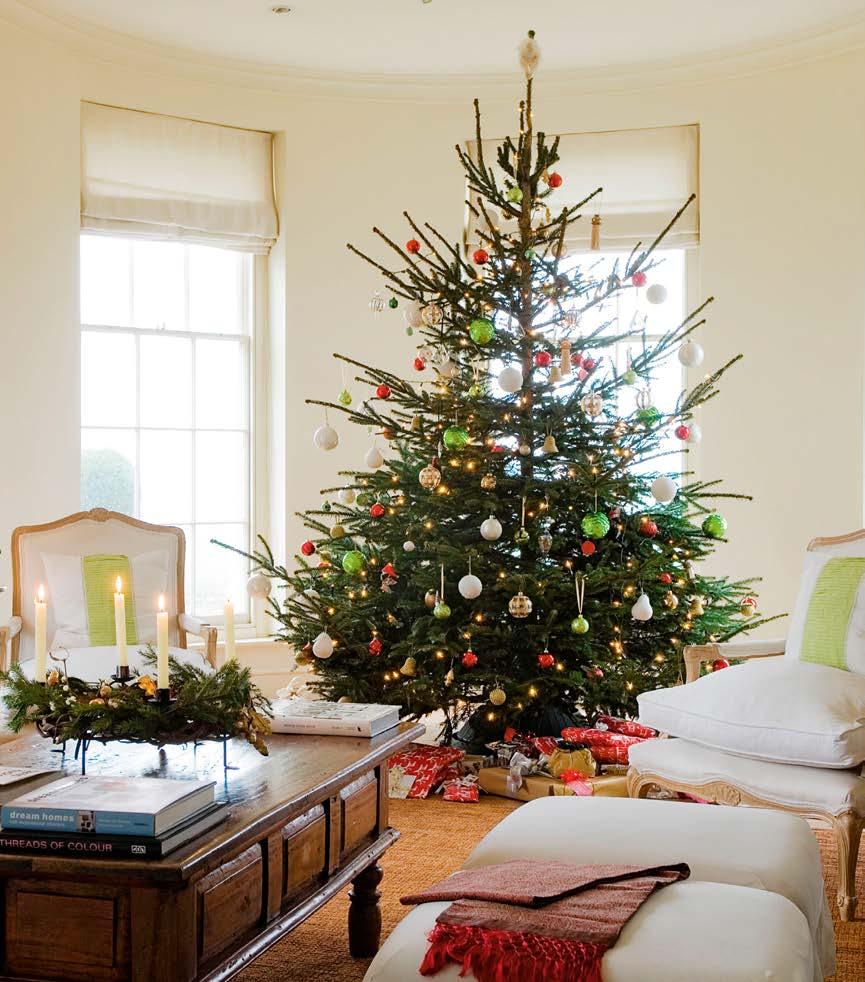
NORDMANN FIR is an excellent choice for less needle shedding on the carpet, as it has soft foliage and strong, even branches.
A PINE variety has a lovely scent but can drop needles, so look out for Lodgepole Pines which have softer, larger needles.











Symbolic of vitality, fertility and romance, mistletoe has been hung for centuries, with the hope of a kiss beneath. Historically, a lip-lock under the mistletoe was said to improve chances of marriage, and so a quick peck was not refused. It was customary to remove a berry after each kiss, and once the plant was bare, no more kisses could be claimed. Today it is viewed
rather more light-heartedly, and hung in hallways to encourage a friendly greeting. A simple bunch can be tied with a ribbon and hung, or more elaborate displays or ‘kissing boughs’ can be created. Sprigs of mistletoe and its glossy white berries also make lovely additions to wreaths and garlands too, as a contrast to rich, ruby-red holly berries.

Father Christmas would not be able to deliver presents around the world without his trusty reindeer to fly the sleigh. On Dasher, On Dancer, On Prancer, On Vixen, On Comet, On Cupid, On Donner and Blitzen! Children love to listen out for sleigh bells and hope they catch a glimpse of his magic reindeer flying through a starry sky on Christmas Eve. A carrot is lovingly left as a treat for the reindeer, and traditionally a mince pie for Father Christmas. But perhaps he might enjoy a delicious, iced reindeer biscuit instead. These are a lovely way to spend Christmas Eve afternoon and children might hope for a foggy night so Rudolph comes along too.
Makes 35 to 40 biscuits
Preparation time: 1hr
Cooling time: 12hr
Baking time: 20 min
Total time: 13hr 20 min
INGREDIENTS
150g butter
220g runny honey
220g brown sugar
150g ground almonds
400g plain flour
1½tsp ground cinnamon
2tsp ground ginger
1tsp lemon zest
1 egg
1tsp bicarbonate of soda
20ml rum
200g icing sugar
1tbsp lemon juice
silver sugar balls
red candy sweets
METHOD
• Melt and stir the butter, honey and sugar in a pan. Pour into a mixing bowl and leave to cool.
• Add the zest, almonds, flour, spices, lemon and egg to the bowl and mix well.
• Mix the bicarbonate of soda and rum, add to the bowl and knead everything into a shiny, not sticky dough. Add
a little flour or water if necessary. Cover with cling film and chill overnight.
• Preheat the oven to 180°C/ gas 4. Line two baking trays with baking paper.
• Roll out the gingerbread pastry on a floured surface, cut out reindeer faces (8-10cm) using a cutter or stencil, place on the trays.
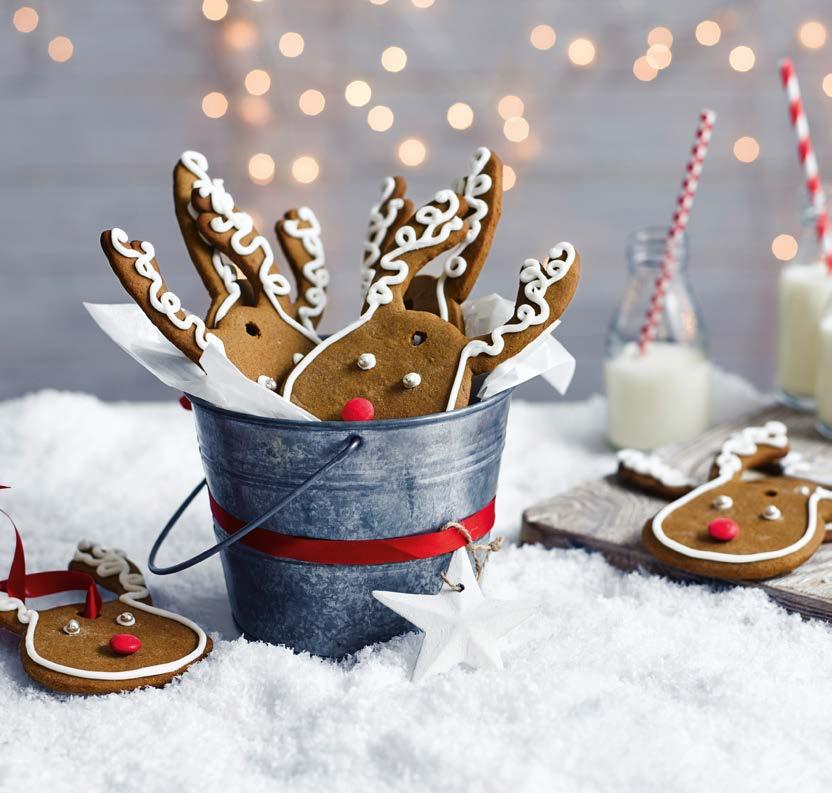
• Use a skewer to make a hole near the top of the heads.
• Bake for 15-20 minutes until the biscuits are firm and starting to darken at the edges. Remove and leave to cool on wire racks.
• Mix the icing sugar, lemon juice and 1-2tbsp water until smooth and thick enough to pipe.
• Spoon into a piping bag fitted with a small plain nozzle, and pipe around the edge of the biscuits.
• Use small blobs of the icing to attach silver balls for the eyes and red candy sweets for the ‘Rudolph’ noses.
• Allow your decorating efforts to dry before serving. Thread ribbon through the holes if so desired, and hang them from your Christmas tree for later.
Sightings of beautiful wreaths on residential streets during the yuletide season is cheering. It is considered an invitation for the Christmas spirit to enter the home. Today, a wreath can allow for an expression of character, with myriad style choices, whether you opt for classic evergreens enlivened with holly berries, a chic contemporary option with mistletoe and eucalyptus, a fantastical display of foraged foliage and dried seed heads, or an all-out decadent floral arrangement finished with a silky bow. Wreaths can be hung on the front door, and even inside to add flair to a wall. A centrepiece wreath can also be used to decorate the table.
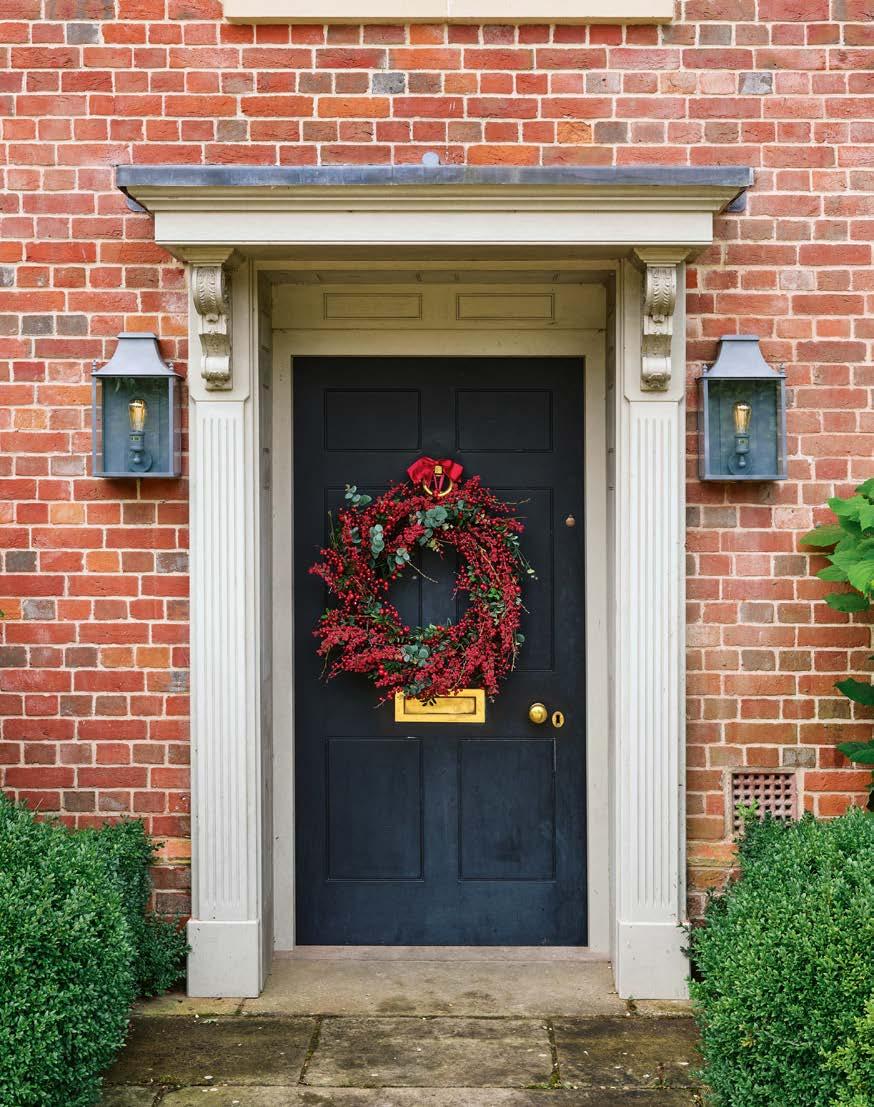
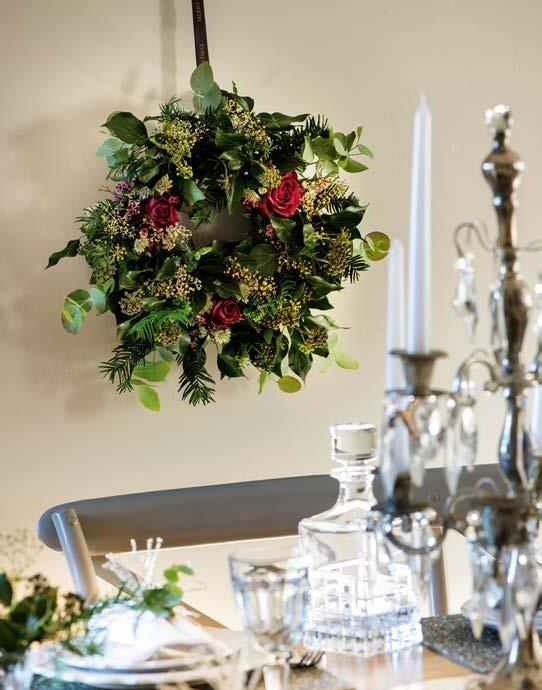
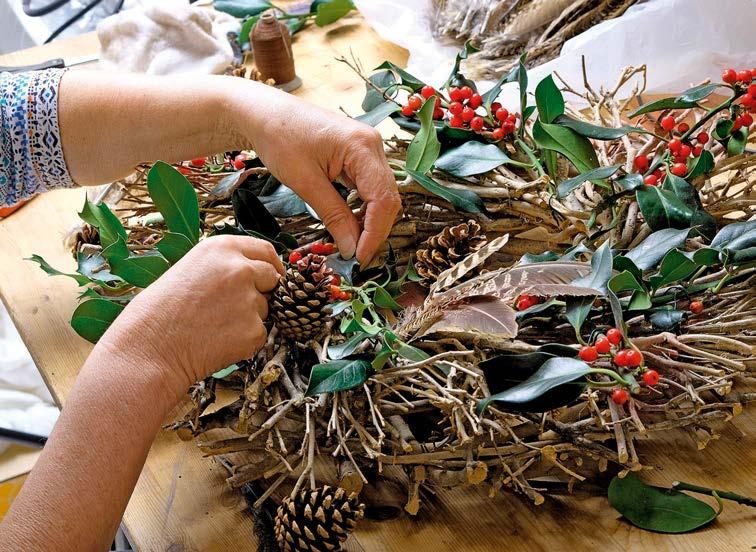







The common abbreviation for Christmas, Xmas, can be a divisive word. For some, us at The English Home included, it is frowned upon to use ‘Xmas’. We would much rather wish you a very merry Christmas!
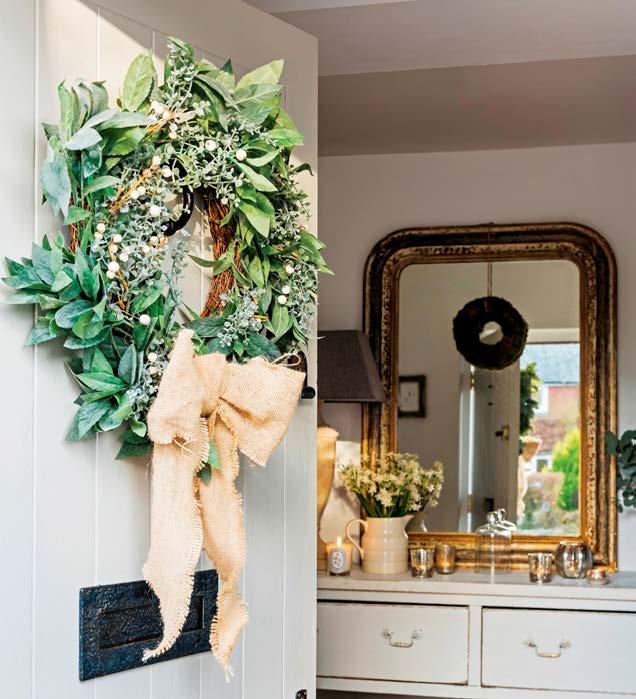
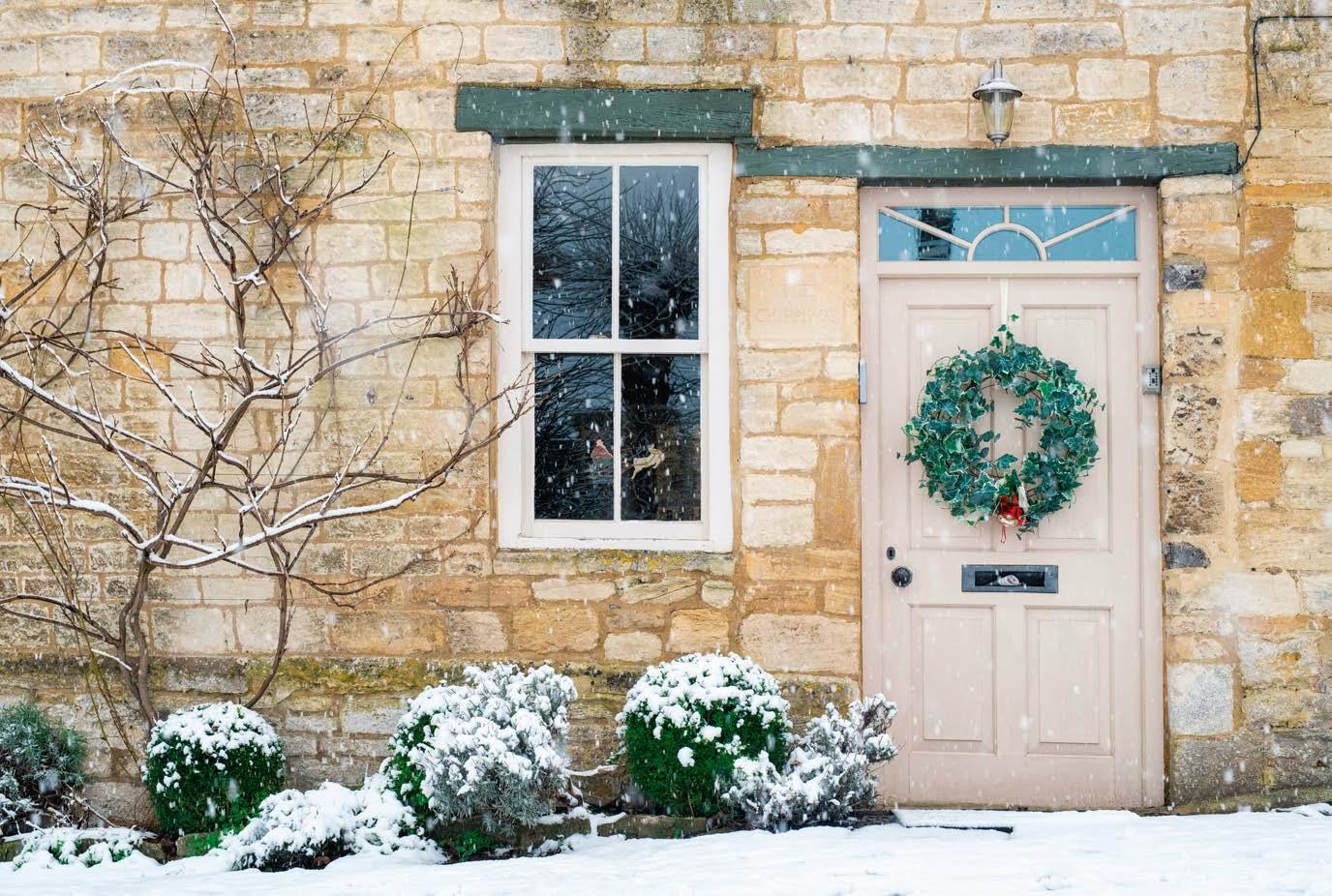




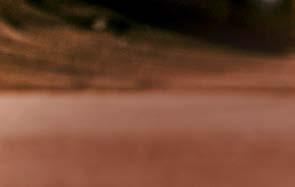




Yule logs are a pagan tradition. A large log would be brought in with great ceremony and burnt each evening, from Christmas Day to Twelfth Night. The last remaining piece would be kept for good luck. Today, we honour this tradition in a rather delicious way, with a chocolate cake.

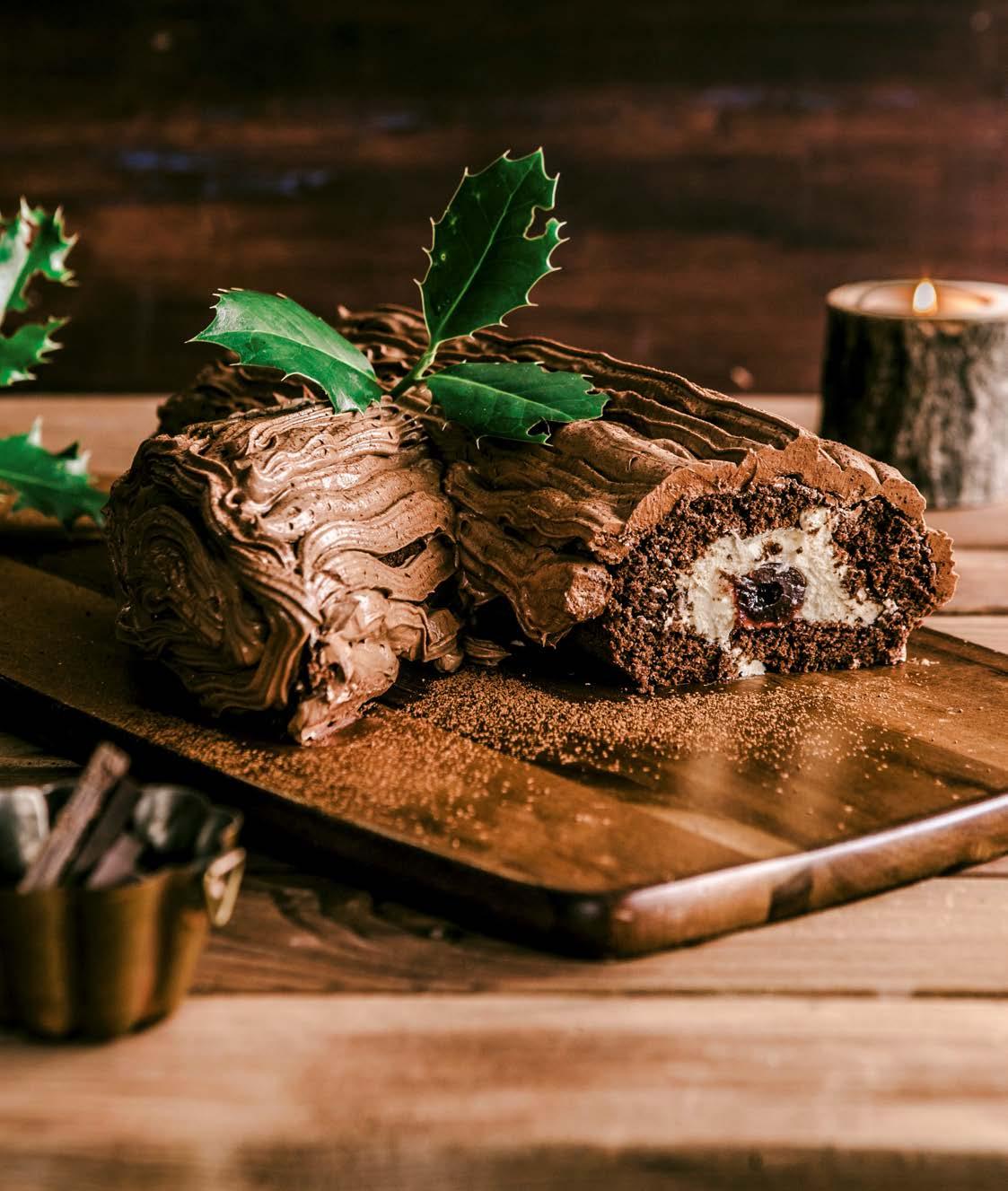
A swiss roll style-sponge is decorated to resemble a log and enjoyed as an alternative to rich, iced fruit cakes. Visit our website, theenglishhome.co.uk to find the recipe for this black forest gateaux-inspired version. Try other festive flavourings, such as chocolate orange or salted caramel too.



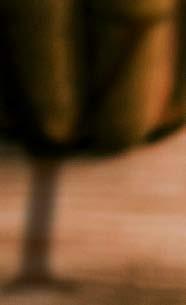
Whether it is the excited counting of sleeps until the big day; the Christmas Eve spent full of anticipation and dreamy visions of sugar plums dancing in one’s head; or a well-deserved nap after dinner with all the trimmings, the festive period will hopefully provide many opportunities for restful silent nights…sleeping in heavenly peace. ■


